

Creative Writing Mini Lessons for Back to School
By: Lori Pelliccia
After my first year of teaching, I wanted to begin with a clean slate the following September. I wanted new assignments, different texts, better activities, and a more satisfying classroom experience for the students and for me. What I wanted most of all was a chance to make the class feel more like my own. Eventually, I developed the following creative writing mini lessons and activities that could be used in multiple ways, but it took me a while to get there.
My initial strategy was to spend the summer reading or re-reading teaching texts such as Readicide by Kelly Gallagher or The Reading/Writing Connection by Carol Booth Olsen and find places where I could insert, alter, or expand existing aspects of the curriculum to make them more aligned with my teaching beliefs and the classroom experience I wanted to create.
Over time, as I went on to teach middle school English for ten years in two independent schools and also online, I found that the core of what I was looking for was a course that asked my students to be creative individuals. Wherever possible, I replaced memorization with application, routine reading responses with creative expression, and silence with conversation, debate, and read alouds.
If, like I was after my first year of teaching, you’re looking at your unit plans with an eraser in hand—or your finger on the “delete” key, as the case may be—I encourage you to first establish your overarching goals, and then consider how one concept can simplify your approach to achieving those goals. Below, I’ll share a few creative writing mini lessons I’ve used to achieve several classroom objectives. “Mini” lessons or activities can be added on and incorporated into various parts of your curriculum planning.
Creative Writing Mini Lessons
Anonymous reading questions.
Goal: Encourage students to ask questions and/or to give structure to class discussions
Writing Activity:
Give each student a sticky note as they enter the room. Ask each student to write a question about the homework, coursework, or reading from the night/day before. Students should NOT sign their names, so everyone should feel comfortable writing any question, no matter how basic.
As the students hand you their sticky notes, quickly read through them (perhaps as the students pull out their books/notebooks/laptops for class) and arrange them on the board according to level of sophistication. This way, you can ask students, as a class, to address questions of clarity and comprehension before moving onto higher level discussion or more complicated topics, depending on the subject area.
Looking for more resources? Check out our teaching writing resources page and sign up for the monthly newsletter.

Choice Reading
Goal: To promote more independent reading
Writing Activity: Choose one night each week where the only homework is to read independently—or more nights per week if possible! This might be a book that students are reading or an article from a newspaper or a passage of optional reading from your course textbook/supplemental texts.
At the beginning of the next class period, ask your students to write a response to a writing prompt related to their choice reading.
Example writing prompts:
- “Share something you learned, something you were unsure about in your reading, and something you were reminded of (a connection you can make) from the reading.”
- “Imagine you are a person/character in the text you read. What struggle are you facing, and what are your options for solving this issue? What support do you need from others in your life to confront this conflict, and why?”
Writing In Other Subject Areas
Goal: To make writing part of your class across subject areas
Writing Activity: Observations, lists, and reactions are wonderful ways to introduce writing in short bursts. In a science class, ask students to write one sentence explaining something they noticed during a lab, demonstration, or when looking at a graph.
Then, share these single-sentence observations aloud, and ask students to write a sentence about any observations they didn’t hear shared aloud yet (and then share these aloud again, thereby creating a collectively thorough recording of the activity). This activity allows students to go beyond surface level thinking with a second round of writing.
Additionally, in a history class, for example, ask students to pause during a lesson and write a list of words or reactions about a particular topic. These lists and initial reactions can be shared aloud to show the teacher and students alike which details are resonating with the class, which topics might be of interest for further independent reading, and where there might be some relevance to today’s society in terms of the connections students make, and emotions they feel, about a curricular topic.
Practice Peer Review
Goal: To position students for productive, respectful peer review in your writing classroom.
Writing Activity: Acquaint with the process of offering and receiving feedback through a “1+1 Share.” This rapid-fire activity invites students to read a portion of their work aloud, no matter its genre or stage in the drafting process; then, their partner offers a “1+1” response, meaning one appreciation (a line that stood out to them, a powerful word, a meaningful moment of dialogue) and one question or suggestion for improvement. Partners can then switch roles, so both gain practice reviewing and being reviewed.
If time permits, you can also facilitate “1+1 sharing” as a class, going round-robin as students share their collective reactions to a given student’s work.
Download Creative Writing Mini Lessons
Looking to save these strategies? Download the pdf version of these mini lessons .

Create Space for Writing
As you work to accomplish your classroom goals, remember to be patient with yourself and your students. Incremental changes, gradual improvements, and a positive attitude are often the best approaches. And along the way, wherever possible, create space for writing—it’s a wonderful way for students to explore ideas or ask questions, to express their individual perspective, and to be part of a community of engaged learners.

Share this post:
Similar Blogs

The Art of Book Review Writing
by Lisa Hiton
Reading critically can seem demanding in the distracted, digitized time we live in....

Op-Ed Writing Tips with Syreeta McFadden
At a time when politics and public thought feel fraught around the globe, opinion writing—and...

How to Write a Stellar Book Review
For many of you, we’ll bet that your love of writing is rivaled only by your love of reading. But...
Reluctant Reader Books
17 Absolutely Gosh-Wow Writing Lessons for Middle School

Below you’ll find a breakdown of our 17 killer writing lessons for middle school, which you can get here .
No doubt you’ll want to check out the lessons first. Click the thumbnail below to preview these amazing middle school writing lessons.
Looking for middle school short stories? Go here .
Looking for 1,029 killer middle school writing prompts? Go here .
Middle School Writing Lessons
So what’s in our lesson plans? Check it out:
1: Who’s the Goat: Debating the Greatest of All Time
2: Mapping the Neighborhood: Creating Maps to Generate Story Ideas
3: My Obituary: The Story of Your Life
4: Double, Double, Toil & Trouble: Writing Recipes for Magic Potions
5: My Principal is an Alien: Writing for the Tabloids
6: You’re Hired! LinkedIn Profiles for Fictional Characters
7: Snow White & the 7 Genres: Rewriting Disney Classics
8: The Choice is Yours: Writing an Adventure as a Class
9: Nuts and Bolts: Writing an Instruction Manual
10: The Watermelons of Despair: Rewriting Classic Titles
11: My Ideal Bookshelf: Illustrating Your Favorite Stack of Books
12: Love Letters From the Undead: Writing Letters From Fictional Characters
13: Harold in the Matrix: Unreliable Narrators in Picture Books
14: Message in a Bottle: Writing Letters to Your Future Self
15: What the Candlestick Saw: Writing From the POV of Inanimate Objects
16: Story Maps: Creating Maps to Visualize Stories
17: The Great American Road Trip: Writing About Travel on the Road
How to Use These Lesson Plans
Our lesson plans are designed to be used in two ways. You can either use them as individual one-off lessons to liven up your writing curriculum. Or you can use them to build upon specific writing units.
For example, creative writing units can benefit from our lessons on point of view, unreliable narrators, and creating LinkedIn profiles for fictional characters.
However, you could use our Who’s the GOAT? and Great American Road Trip lessons as stand alone lessons that are fun and engaging but don’t necessarily connect to a wider unit.
What Grade Level Are These Lessons Appropriate For?
We design our lesson plans to be utilized by a wide range of educators. These writing lessons are not grade-specific, and they can be adapted for students from 5th grade up through 12th grade.
Depending upon the specific needs and ability levels of your students, they can be expanded or contracted. Want your students to dive more deeply into POV? Have them write longer pieces or produce multiple pieces from different points of view. Want them to focus on just the basics of their obituary? Assign two paragraphs instead of multiple pages.
We believe teachers deserve lesson plans that provide a clear path but that leave plenty of room for educators to adapt and adjust for their own purposes.

How to Use ChatGPT in the Classroom

77 Poems for Middle School
Terms & Conditions
Privacy Policy
180+ Pages of Short Story Lesson Plans

- HOW TO GET STUDENTS WRITING IN 5 MINUTES OR LESS

Writer’s Workshop Middle School: The Ultimate Guide
Feb 23, 2021
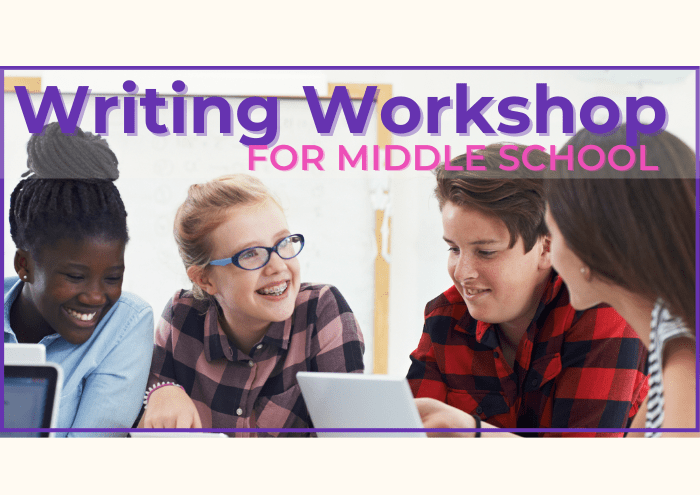
Writer’s Workshop Middle School: The Ultimate Guide defines the writer’s workshop model, its essential components, pros and cons, step-by-step set-up, and further resources.
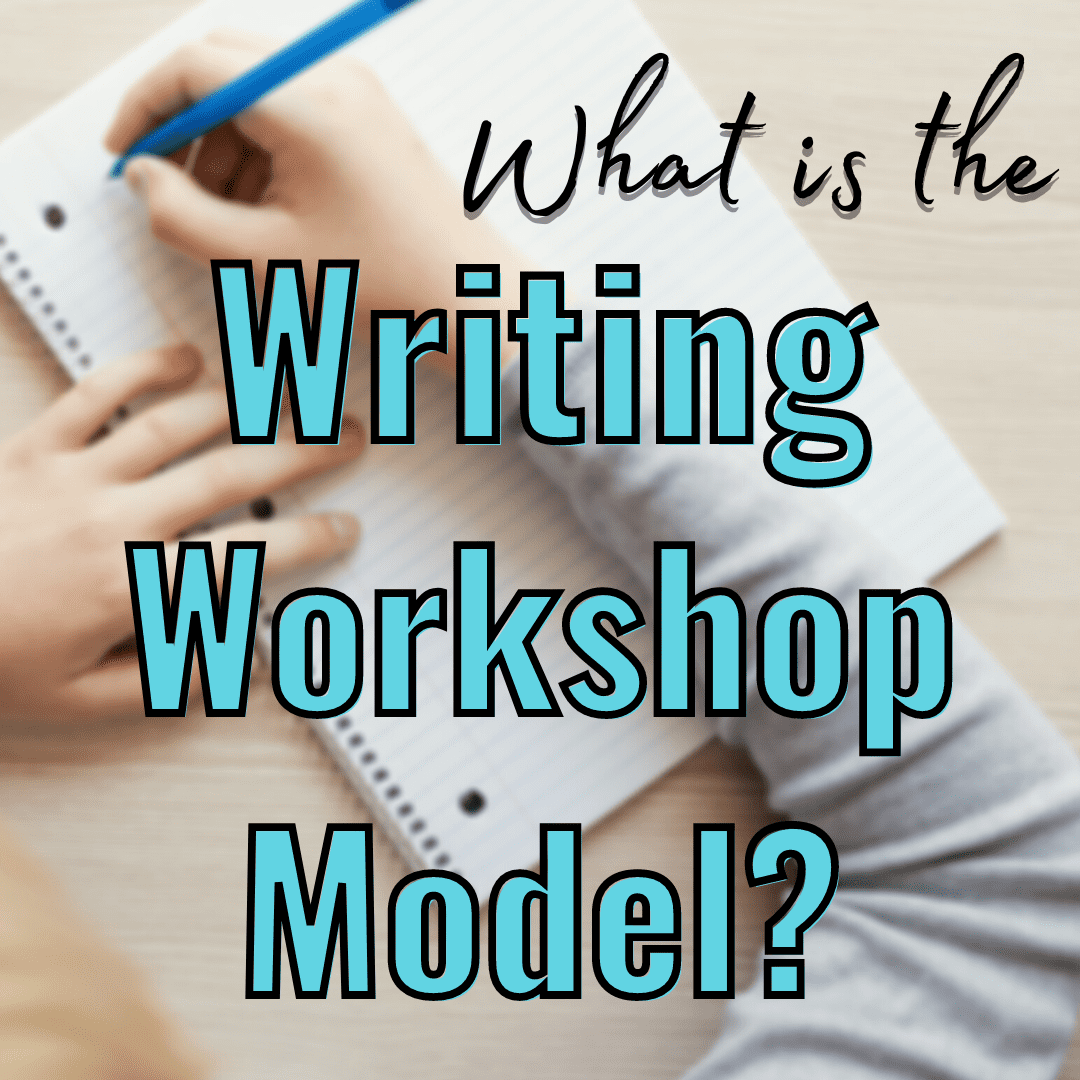
What is the writer’s workshop model?
Writer’s workshop is a method of teaching writing developed by Donald Graves and Donald Murray , amongst other teacher-researchers.
The writer’s workshop provides a student-centered environment where students are given time, choice, and voice in their learning. The teacher nurtures the class by creating and mentoring a community of writers.
So, why does the writer’s workshop in middle school matter?
Students learn more during the writer’s workshop because you can mentor them toward what they need to know and practice, and they have lots of time to write and read in order to improve at their own pace (to an extent).
For example, if the skill I need to teach is how authors use mood and tone to create meaning , then I would use a mentor text to teach that concept. However, after reading, the focus will not be on answering questions about the text in written form. Instead, I demonstrate how writers choose particular words and the arrangement of those words to create a mood and tone.
Students then try creating mood and tone with their own pieces of writing. Only after students have practiced their own creations, do I then circle back around to other literature for students to practice literary analysis of mood and tone and its effect on meaning.
Why I focus on writing in the ELA classroom?
I’ve found students are more likely to read assigned texts if I’ve given them a reason to use those texts. That reason? To apply what they learn from mentor texts to their choice writing. Middle school students love to express themselves in creative ways, and by giving students this choice, you build engagement and motivation to continue learning.
The essential components of the writer’s workshop in middle school are:
- Time to write daily
- Student choice
- Exploring the writer’s voice
- Building a community of writers
- Mentor teaching
1. Time to Write Daily
Students need a chance to write daily. Various ways you can do this are through Bell Ringers at the beginning of the class, writing during the mini-lesson, and writing projects during workshop time. My students use writing journals because they need a space to think before they face a blank computer screen.
Students do read in my classes. However, their purpose for reading is to become better writers. This reading is either assigned, student choice, or a choice between the assigned reading and student choice, depending on the skill or concept I’m targeting that week.
This is how I break up our daily writing:
- Write Now (bell ringer)
- Mini-lesson and sharing
- Writing/Reading Workshop while I confer with writers
- Short turn and talk, log off computers and pack up
Below is an example of my story writer’s workshop time transformation. This is what I use when we are writing narratives. I’m using a fantasy magic theme here:
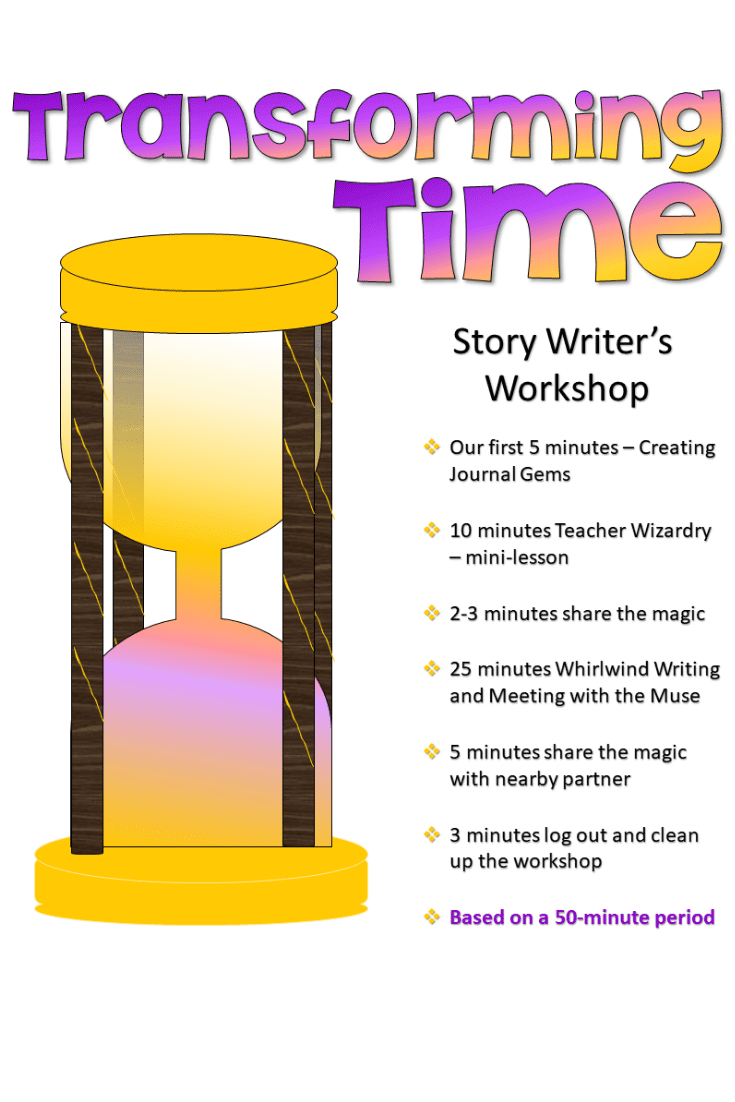
2. Student Choice
To keep students motivated to write, you want to build in student choice whenever and wherever possible. Just to clarify, you don’t have to give them choices for everything they do.
For one thing, that would be as overwhelming as shopping on the cereal aisle at your local grocery store. Just too many choices.
When I introduce a concept, I may give them a few choices on how students can practice that concept. If I give them a writing assignment, I often allow them ONE choice in topic, genre, audience, or mode of writing.
If you need students to complete an assignment/activity within a certain time period, tell them ahead of time. Let them know they can turn in an excerpt if they want to write something longer than you expect.
Of course, this is not always possible. They need to learn how to write within certain time parameters. So, let them practice this through timed writings or word sprints .
One way to help students with choice is to have them do listing activities frequently. They could even have a section in their writing notebooks just for lists of ideas.
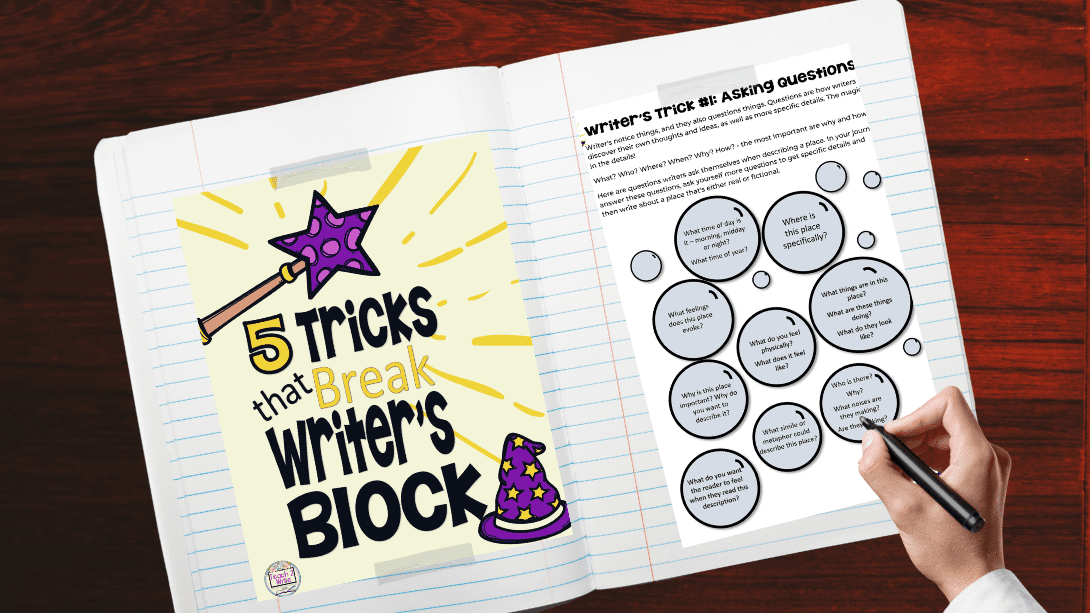
3. Exploring the writer’s voice
Writer’s voice – that elusive term that most writers have no idea how to achieve until they’ve written for a while, and then finally realize they have it. The ultimate goal for me as a writing teacher is to help my students to find their voice.
I want students to be able to explore what is important to them personally and to explore how they can share this with others. From encouraging students to participate in small group sharing to author’s celebrations, students need the opportunity to see their writing voice matters.
There are so many different ways for kids to publish safely online – Edublogs, Adobe Spark, Google Sites, FlipGrid, etc.

4. Building a community of writers in your writer’s workshop for middle school
Middle school students are very social, but even the quiet writers need to socialize often with other writers. This component of the writer’s workshop for middle school is what makes this model an actual workshop.
Students share their writing with each other. Usually, I allow for natural partnerships and groups to form. However, at the beginning of the year, I often pair up students for short activities. This helps everyone feel more comfortable with each other.
One way I build a community of writers is to play the name game at the beginning of the year. We all stand in a circle and we toss a ball to each other and say our name and all the people who have had the ball tossed to them. It gets fun when students start to forget names. They all start out being self-conscious but end up laughing and smiling.
Another way to build a community is during share time. I have students write in their notebooks as soon as they come into the classroom as a warm-up, starter activity that I call Write Nows. These Write Nows are projected up on the screen, and students write for 2-5 minutes. After this, I ask students to turn and talk to a neighbor about what they wrote.
Sometimes this writing is a review of the previous day or another activity that goes along with the skill we are learning. Other times it is a prewriting activity that helps break writer’s block .
Write a Letter to your Students
To help students get to know me as a community member, I write a letter to them and they write back to me. This starts the relationship-building between my students and me within the first week, and I conference with the students about their letters. This also gets them into the swing of a writer’s workshop.
My students love this letter-writing activity that I’ve done every year for the past 24 years. It’s a hit every year and establishes the tone and mood of our workshop.
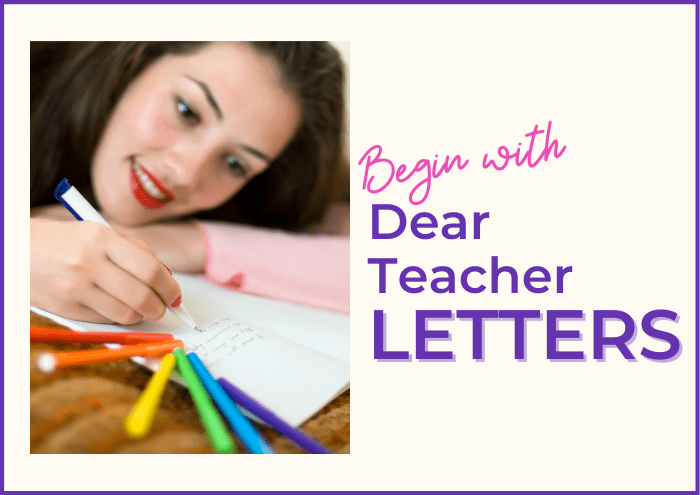
5. Teacher as Writing Mentor
One of the most important components of the writer’s workshop in middle school is you – the writing teacher.
To teach writing well, you should write along with your students. Over the years, I’ve written on transparencies, used a document camera, and filmed myself writing. All of these methods work. Generally, I write along with students during the bell-ringer activity, which I call Write Now, but sometimes I’ve prewritten the Write Now.
Additionally, I show students my various writing projects, both published and unpublished, during daily lessons.
My students have seen this blog, heard my podcasts , listened to me read aloud from stories I’ve written and/or published. My students are the ones who pushed me to publish my first YA books . You’ll be amazed at what you come up with and how this creates a bond with your students that lasts a lifetime.
Also, by completing the writing assignments you assign, you’ll be able to empathize with and anticipate the writer’s struggle with each assignment.
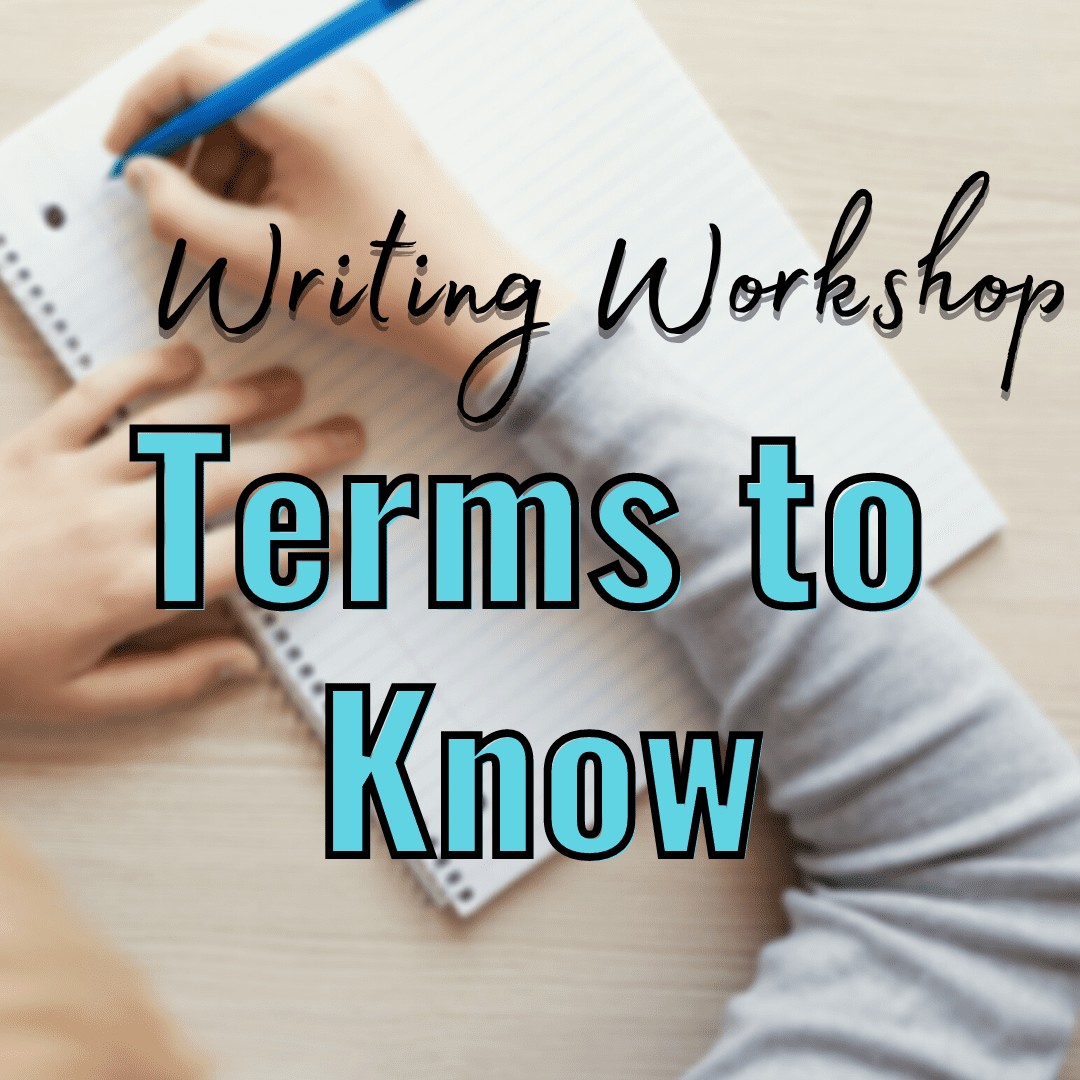
Terms to Know for Writing Workshop
This is not an exhaustive list, but one that will be added to as I find more terms that should be added here.
Activity: the practice of a skill or process, especially when gaining new knowledge
Assignment: a product created by the student after practicing a skill or process that may be revised up until a particular due date
Bell ringer: a beginning of the period activity (I call these Write Nows in my class)
Blended learning environment: in-person LIVE teaching and learning or digital learning with recorded lessons
Conference: a meeting between teacher and student about their writing
Journal write: handwriting in a journal for ideas, bell ringers, collecting information, etc.
Mini-lesson: a short 5-10 minute lesson that teaches either a whole or partial skill or process
Mastery Learning: quizzing students on their conceptual knowledge, giving them different activities based on the results of their quizzes – either reteach or extend – and quizzing again. Revisions can also be mastery-learning pieces.
Mentor texts: well-written, multicultural texts used to demonstrate a literary concept or style
Rubric: a breakdown of the skill into levels of learning – students revise to earn a higher level
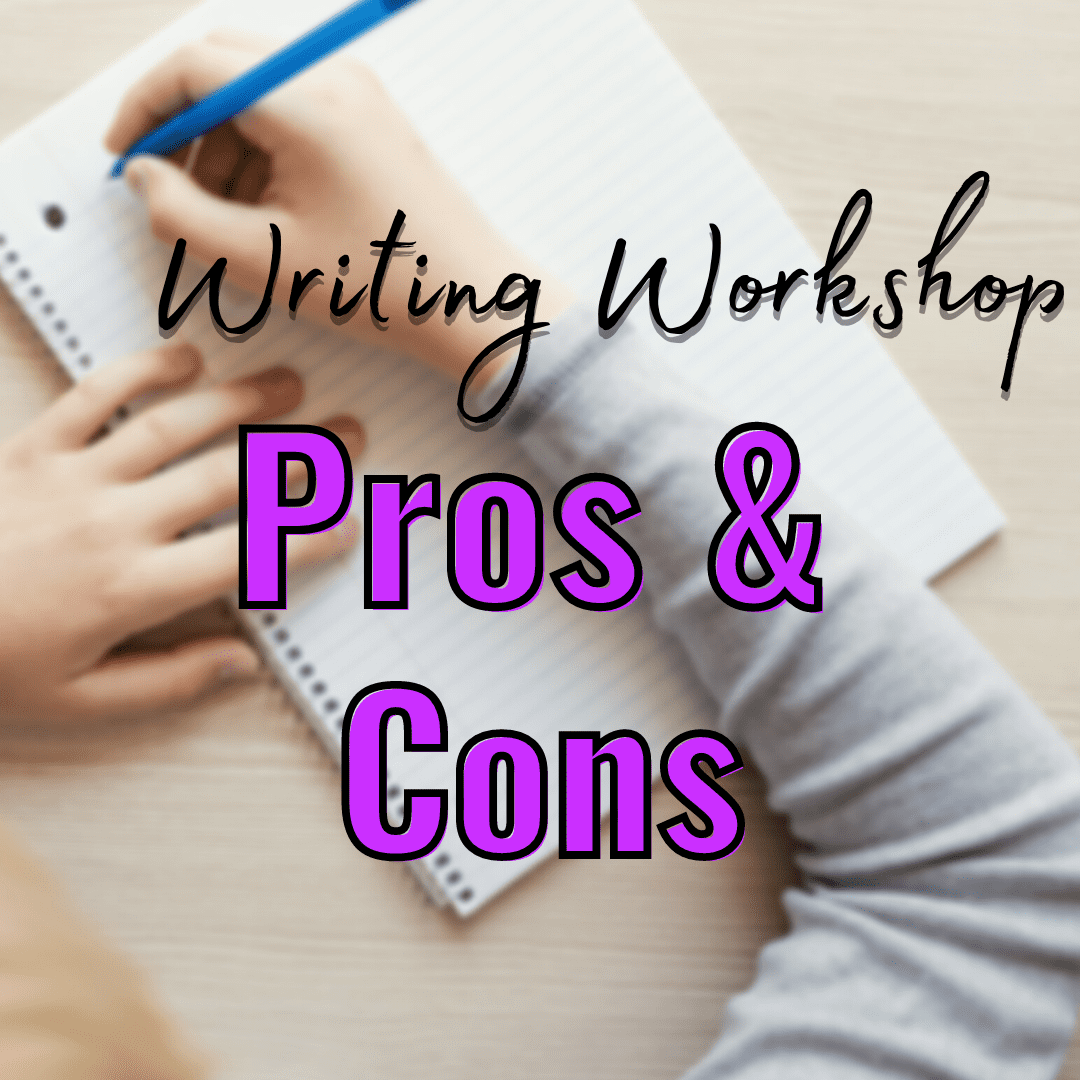
Writing Workshop Middle School Pros and Cons
- Builds student relationships with you and each other – lots of SEL
- Easier to differentiate for students than the traditional classroom model
- Grading can be accomplished during conferences
- Students are more engaged and begin to enjoy writing
- They might even enjoy reading more, too
- Mini-lessons are short, sweet and to the point, less prep time for presentations
- Breaking through writer’s block
- Teaching students how to use the technology
- Helping students revise if they don’t have access to technology
- Adapting to technology challenges that arise (switch to writing journals or change Internet browsers)
- Deadlines can be difficult to manage sometimes
As far as time management is concerned – one of the things I am going to stress to my students is the need for getting assignments turned in, even if it’s not perfect. I need to be able to keep them to deadlines. So, this year, I’m going to teach my student’s Parkinson’s Law :
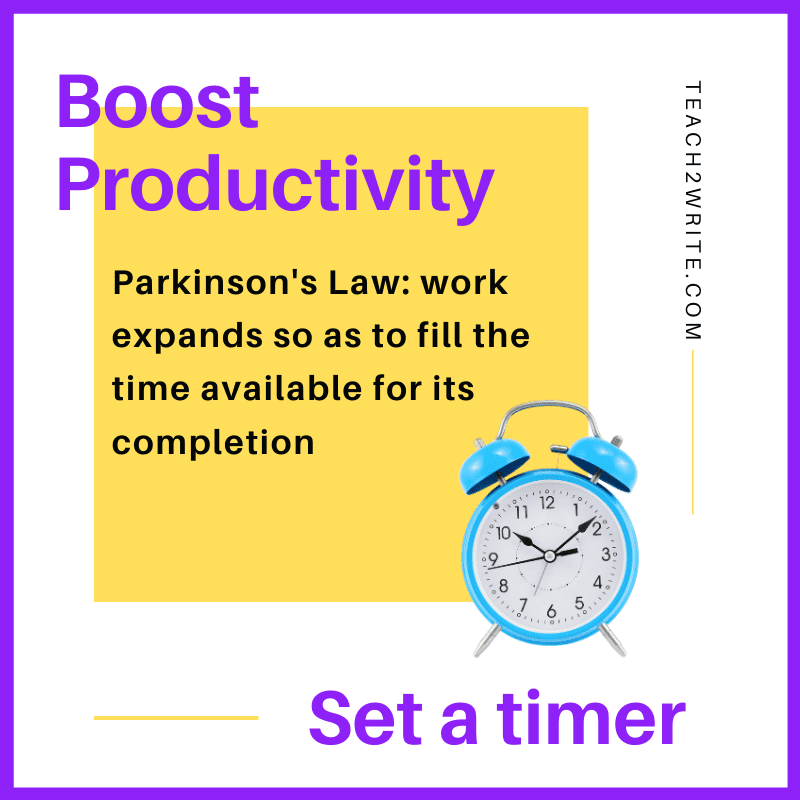
How to start a writer’s workshop for middle school
These are the steps I’m taking this year to start my writer’s workshop, and I’ve used these for quite a few years now. Some steps may be done simultaneously on the same day. There will be future blog posts about each of these steps.
- Create a welcoming classroom space.
- Decide what technology you will be using – hardware and software. If you need help with Canvas LMS, click here .
- Send out your course syllabus with materials students will need for your course.
- Create a course outline based on your school’s curriculum guides or state standards.
- Plan and post your first 2 weeks of lessons and assignments into your online course (if you are using technology in your course).
- Establish classroom expectations and routines.
- Build a classroom community of writers.
- Show students how to navigate your course online.
- Write a letter to your students and have them write back to you as their first assignment.
- Confer with your writers as they are writing their letters and make a list for yourself of things students need to work on with their writing.
- Set up writing journals and begin writing workshop routines.
- During mini-lessons, teach the 5 tricks that break writer’s block .
- Students write in journals to gather ideas and begin writing pieces.
- Assign a short writing piece and confer with writers during workshop time.
- Teach ONE revision strategy during a mini-lesson, depending on your curriculum.
- Teach ONE editing strategy during a mini-lesson, depending on your curriculum.
- Allow writers to revise and edit before turning in their first short writing assignment.
- Celebrate your writers with the Author’s Chair presentations.
- Continue writer’s workshop by using daily bell ringers, mini-lessons about writing and reading, sharing, writing/reading workshop, conferencing, and turn and talk.
- Breakaway from the writer’s workshop routine every once in a while to play – escape rooms, read-arounds, watch a movie, celebrate authors, group brainstorm, catching up on overdue assignments.
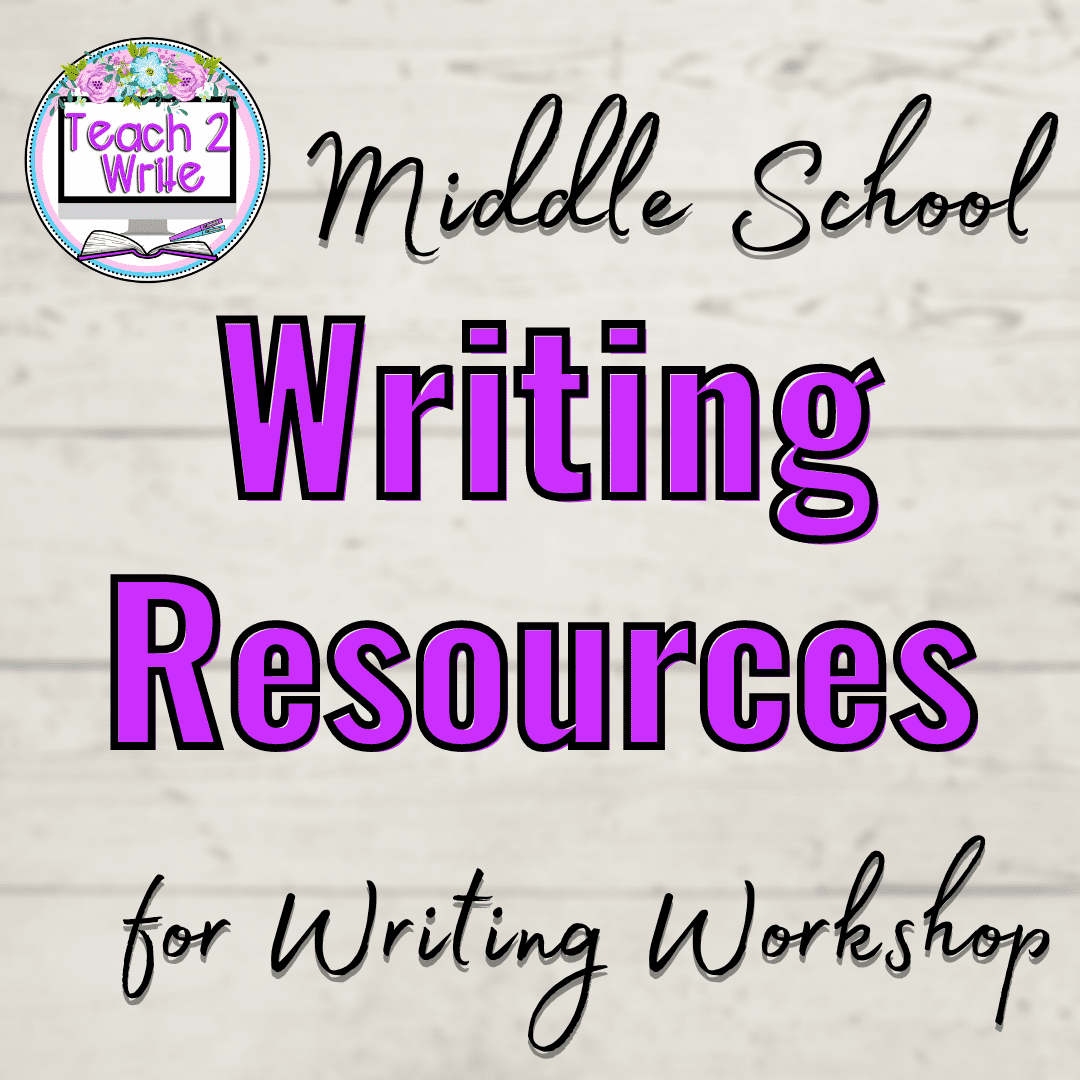
References for Writing Workshop in Middle School
Atwell, Nancie. In the Middle: A Lifetime of Learning about Writing, Reading, and Adolescence. Heinemann, 2014.
Graves, Donald H. “All Children Can Write.” http://www.ldonline.org/article/6204/
Lane, Barry. After The End: Teaching and Learning Creative Revision. Heinemann, 2015.
Murray, Donald. “The Listening Eye: Reflections on the Writing Conference” https://secure.ncte.org/library/NCTEFiles/Resources/Journals/CE/1979/0411-sep1979/CE0411Listening.pdf
Learning materials for Writing Workshop for Middle School
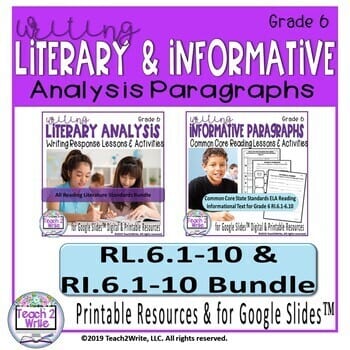
Writing Literary & Informative Analysis Paragraphs
Students struggle with writing a literary analysis , especially in middle school as the text grows more rigorous, and the standards become more demanding. This resource is to help you scaffold your students through the process of writing literary analysis paragraphs for CCSS ELA-Literacy RL.6.1-10 for Reading Literature and RI.6.1-10 Reading Information. These paragraphs can be later grouped together into writing analytical essays.
PEEL, RACE, ACE, and all the other strategies did not work for all of my students all of the time, so that’s why I created these standards-based resources.
These standards-based writing activities for all Common Core Reading Literature and Informational standards help scaffold students through practice and repetition since these activities can be used over and over again with ANY literary reading materials.
Included in these resources:
- step-by-step lesson plans
- poster for literary skills taught in this resource
- rubrics for assessments standards-based
- vocabulary activities and notes standard-based
- graphic organizers that incorporate analysis of the literature and information standard-based
- paragraph frames for students who need extra scaffolding standard-based
- sentence stems to get students started sentence-by-sentence until they master how to write for each standard
- digital version that is Google SlidesTM compatible with all student worksheets
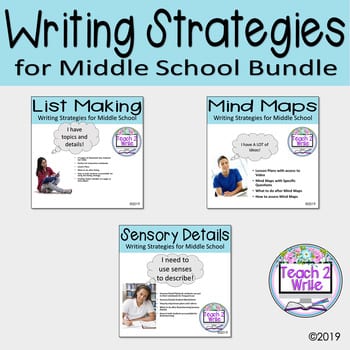
List Making: This resource helps students make 27 different lists of topics they could write about.
Sensory Details: This resource will help you to teach your students to SHOW, not tell. Descriptive writing with a sensory details flipbook and engaging activities that will get your students thinking creatively and writing with style.
Included in this resource are 2 digital files:
- Lesson Plans PDF that includes step-by-step lesson plans, a grading rubric to make grading faster and easier, along with suggestions for what to do after mind mapping.
- Google SlidesTM version of the Student Digital Writer’s Notebook allows students endless amounts of writing simply by duplicating a slide.
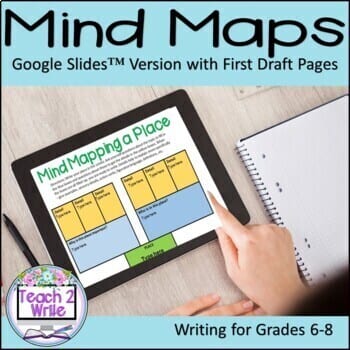
Recent Posts
- Text Features Vs Text Structures: How to introduce text structures to your students
- Nurture a Growth Mindset in Your Classroom
- 3 Middle School Writing Workshop Must-Haves
- Writing Strategies for Middle School Students
- Writing Response Paragraphs for Literature
- September 2023
- October 2022
- August 2022
- January 2022
- October 2021
- February 2021
- January 2021
- February 2020
- January 2020
- December 2019
- November 2019
- September 2019
- February 2019
- October 2018
- February 2018
- Creative Writing
- middle school writing teachers
- Parent Help for Middle School Writers
- writing strategies and techniques for writers
- Entries feed
- Comments feed
- WordPress.org
Privacy Overview
- Ghost Writing
- Proofreading
- Book Promotion
- e-Book Writing
- Blog Writing
- Website Content Writing
- Article Writing
- Book Video Trailer
- Author Website
- Case Studies
- Testimonials
- +1 628 227 3315
- Book a Call
- Get a Quote
Sign Up Now & Let’s Get Started
50 creative writing prompts for middle school students.
- September 11, 2023
- 11 min read
Table of Contents:
Why creative writing matters, prompts to explore personal experiences, prompts for imagining fantastic worlds, prompts for exploring emotions, prompts to unleash adventure, prompts for humor and laughter, writing prompts for middle school mystery and suspense section, prompts to reflect on the future, prompts for historical time travel, writing prompts for middle school to target sci-fi and futuristic fantasies, writing prompts for middle school to dive into nature, writing prompts for middle school for alternate realities, are these prompts suitable for both classroom and individual use, creative writing.
Press The Play Button On The Audio To Listen Complete Article!
Middle school is a time of exploration, growth, and boundless imagination. It’s a phase where young minds are eager to express themselves, and what better way to channel this energy than through creative writing? This article explores 50 creative writing prompts for middle school students to worlds of wonder, emotion, and adventure. These prompts stimulate their creativity, boost their writing skills, and encourage them to think beyond the ordinary.
Creative writing holds a significance that extends far beyond the confines of a classroom. It is a form of expression that acts like a mirror reflecting human emotions, similar to what is explored in What are the three main purposes for writing? . It is a powerful medium through which individuals can express their innermost thoughts, emotions, and ideas, allowing them to connect with themselves and the world around them on a deeper level. This art form empowers individuals to unleash their imagination and paint vivid landscapes of words, enabling them to communicate in ways that traditional language often falls short of. For middle school students, creative writing is a journey of exploration and growth, much like the journey described in How to write a good story: A complete process . As they engage with a diverse array of writing prompts for middle school, they embark on a path that enriches their vocabulary, refines their grasp of grammar, and teaches them the invaluable skill of structuring their thoughts coherently and effectively. Through crafting narratives and weaving intricate tales, students learn the art of storytelling, a skill crucial in literature and various aspects of life. Whether it’s penning down a compelling essay, delivering a persuasive speech, or even drafting a well-structured email, the ability to organize ideas compellingly is a trait that serves students well throughout their academic and professional journey. However, the benefits of creative writing go well beyond linguistic and organizational services like book writing services . This form of expression acts as a mirror that reflects the complexities of human emotions. As students immerse themselves in crafting characters, settings, and plotlines, they inherently develop a deep sense of empathy. By stepping into the shoes of diverse characters and exploring the world from various perspectives, students cultivate an understanding of different viewpoints, backgrounds, and experiences. This broadens their worldview and nurtures their ability to relate to and connect with people from all walks of life.
- Discovering a Hidden Door
Imagine stumbling upon a mysterious door in your school that no one else has noticed. Where does it lead, and what adventures await on the other side?
- The Day I Traveled Through Time
You wake up one morning to find yourself in a different period. Describe your experiences and the challenges you face in this unfamiliar era.
- My Conversation with a Talking Animal
While wandering in the woods, you encounter an animal that can communicate with you. Write about your unexpected conversation and the wisdom the animal imparts.
- A Mysterious Message in a Bottle
You discover a message in a bottle washed up on the shore. What does the message say, and how does it change your life?
- Life on a Floating Island
Describe a world where entire civilizations exist on floating islands in the sky. What are the unique challenges and wonders of this airborne realm?
- Journey to the Center of a Candy Planet
You embark on a journey to the core of a planet made entirely of candy. Detail your adventures as you traverse the sugary landscapes.
- The Robot’s Secret Rebellion
In a futuristic city, robots have secretly started rebelling against their human creators. Explore the events leading up to this uprising and the consequences that follow.
- When Magic Came to the Modern World
Magic suddenly becomes real in the present day. How does society change, and how do you adapt to this new magical reality?
- The Joy of Finding a Lost Toy
Revisit a childhood memory of losing a cherished toy and the overwhelming happiness of eventually finding it.
- A Moment of Overcoming Fear
Write about when you faced a fear head-on and emerged stronger and braver on the other side.
- The Bittersweet Farewell
Explore the emotions surrounding a farewell to a close friend moving away. How do you cope with the mixture of joy and sadness?
- An Unexpected Act of Kindness
Describe an instance where a stranger’s small act of kindness profoundly impacts your life and perspective.
- Quest for the Enchanted Crown
Embark on a quest to retrieve a stolen enchanted crown from a treacherous dragon’s lair. Chronicle your epic adventure and the challenges you must overcome.
- Lost in a Haunted Forest
You find yourself lost in a mysterious and haunted forest. Describe your eerie surroundings and the spine-chilling encounters you experience.
- Exploring an Abandoned Space Station
Write about your exploration of a deserted space station, uncovering its secrets and unraveling the mysteries of its past.
- Time-Traveling to Historical Events
Where and when would you go if you could time-travel to any historical event? Describe your experiences and the impact they have on your perspective.
- The Day I Turned into a Vegetable
Imagine waking up one day to find yourself transformed into a vegetable. How do you communicate, and what hilarious misadventures ensue?
- Conversations Between My Pets
Write a humorous dialogue between your pets discussing their daily lives, adventures, and their peculiar perspectives on the world.
- When My Room Became a Miniature Zoo
Describe a scenario where your room suddenly becomes a mini-zoo filled with various animals. How do you manage this unexpected turn of events?
- The Misadventures of Super Socks
Create a quirky superhero story where a pair of socks gains extraordinary powers and embarks on comical crime-fighting escapades.
- The Puzzle of the Whispering Walls
Detail a suspenseful investigation into the strange phenomenon of walls that whisper cryptic messages, leading to an unexpected revelation.
- Footprints in the Forbidden Attic
You discover mysterious footprints leading to the forbidden attic in your house. Write about your daring exploration and the secrets you uncover.
- The Disappearance of the Midnight Carnival
Describe the mysterious disappearance of a beloved carnival that only operates at midnight. What clues do you follow to solve the enigma?
- The Secret Diary of a Famous Explorer
You stumble upon the secret diary of a renowned explorer. Unveil the adventures chronicled within its pages and the hidden truths it holds.
- A Glimpse into Life as an Adult
Imagine yourself as an adult and write about a day in your future life. How have your goals, priorities, and perspectives evolved?
- Inventing a Revolutionary Gadget
Design a revolutionary gadget that changes the world. Describe its features, benefits, and the impact it has on society.
- My First Day on Another Planet
Transport yourself to an alien planet and narrate your experiences on the first day of your interstellar adventure.
- The World After Solving Pollution
Describe a world where pollution has been successfully eliminated. How does this achievement reshape the environment, society, and daily life?
- Prompts for Exploring Friendship
Write about a strong and unbreakable bond between two friends. What challenges have they overcome together, and how has their friendship evolved?
- Adventures of the Dynamic Duo
Create a story about a dynamic duo who embark on thrilling adventures together. What makes their partnership special, and how do they complement each other?
- A Magical Friend from a Book
Imagine a character from a book coming to life and becoming your friend. Describe your magical friendship and the escapades you share.
- Messages in a Bottle Between Pen Pals
Two pen pals communicate through messages sent in bottles across a vast ocean. Write about their unique form of friendship and the stories they share.
- An Interview with a Renaissance Artist
Travel back in time to interview a famous Renaissance artist. Explore their inspirations, struggles, and the impact of their art on the world.
- Surviving the Titanic Disaster
Imagine being a passenger on the Titanic and surviving the tragic sinking. Chronicle your experiences and the lessons you learn from the ordeal.
- Ancient Egypt: Through the Eyes of a Pharaoh
Experience life as an ancient Egyptian pharaoh. Describe the grandeur of your rule, interactions with subjects, and leadership challenges.
- Encountering Dinosaurs in Prehistoric Times
Describe an adventurous journey to prehistoric times, where you encounter dinosaurs and experience the wonders and dangers of the ancient world.
- When Robots Ruled the World
Envision a world where robots have taken over as rulers. Detail the consequences of this robotic regime and the struggles of human resistance.
- Galactic Explorers on a New Frontier
Join a group of galactic explorers as they venture into uncharted space territories. Describe their discoveries, encounters, and the mysteries they unravel.
- The Day I Met an Alien from Mars
Write about the day you encounter a friendly alien from Mars. How do you communicate, and what do you learn from each other?
- Earth 3000: A Utopian Dream or Dystopian Reality?
Transport yourself to the year 3000 and describe the state of the Earth. Is it a romantic paradise or a dystopian nightmare? What led to this outcome?
- Conversations with Forest Creatures
Imagine having conversations with animals in a magical forest. Write about the wisdom they share and the adventures you embark on together.
- My Adventure in the Enchanted Rainforest
Describe your thrilling adventure through an enchanted rainforest with mystical creatures and hidden secrets.
- The Underwater Discovery: Mermaid’s Tale
You discover a hidden underwater world inhabited by mermaids. Chronicle your underwater journey and the interactions you have with these mythical beings.
- Exploring a World Inside a Dewdrop
Write about a micro-adventure inside a dewdrop, where you encounter miniature worlds and experience nature from a new perspective.
- Stepping into a Mirror Universe
Describe an experience where you step into an alternate reality through a mirror. How is this world different from yours, and what challenges do you face?
- The Butterfly Effect: Changing a Single Moment
Explore the butterfly effect concept by narrating a story where changing a single moment in the past has a cascading impact on the present and future.
- My Life as a Fictional Character
Imagine living the life of a fictional character from your favorite book. Describe your experiences as you navigate their world and story.
- When Dreams Became Our Reality
Write about a world where dreams have the power to shape reality. How do people use their dreams to create their lives, and what challenges arise?
- The Ethereal Library
Imagine a mystical library that holds books containing the stories of every possible life you could have lived. Write about a person who stumbles upon this library and can read the book of their alternate life stories.
- The Reality Architect
In a future society, some specialized architects design alternate realities for individuals seeking escape from their own lives. Write about a reality architect and their journey to create the perfect alternate world for a client.
- The Convergence Point
Describe a world where all alternate realities converge at a single point in time. People from different realities can meet and interact for a brief period. Write about the challenges and opportunities that arise during this unique convergence.
The suitability of writing prompts for middle school for classroom and individual use depends on their content and complexity. Prompts encouraging critical thinking, creative expression, and thoughtful discussion can work well in both settings. However, there are a few considerations to keep in mind:
- Ensure that the prompts are clear and easily understandable by individuals and a group of students. Avoid overly complex language or concepts that might be confusing.
- Writing prompts for middle school allow various interpretations, and responses can engage individual learners and groups. This flexibility encourages students to express their unique perspectives.
- Choose interesting and relevant writing prompts for middle school to the target audience, whether in a classroom full of students or individuals working independently. Engaging prompts are more likely to spark enthusiasm and thoughtful responses.
- Prompts that invite discussion and debate can lead to rich and meaningful conversations for classroom use. These prompts should be open-ended and encourage diverse viewpoints.
Middle school is critical for nurturing creativity, similar to the journey detailed in How to launch a book: The ultimate guide for authors , young students’ creativity, and honing writing skills. These 50 creative writing prompts for middle school offer many opportunities to explore diverse themes, emotions, and scenarios while refining their writing abilities. Whether they’re crafting tales of time travel, exploring futuristic realms, or delving into the mysteries of the past, these prompts will ignite the imagination and open new avenues of self-expression for budding writers.
limited Time offer
50% off on all services.
REDEEM YOUR COUPON: ABW50
Are You Prepared to Share Your Story with the World?
Proceed To The Next Phase Of Your Publishing Adventure And Transform Your Manuscript Into A Published Book.
Recommended Blogs
B2b copywriting: everything you need to know in 2023, 10 best books on native american history to learn, what is the shortest book in the bible (& its teaching), leaving so soon.
SIGN UP NOW TO ACTIVATE YOUR 50% OFF COUPON NOW!
Discuss With Our Content Strategist Toll Free +1 628 227 3315
Automated page speed optimizations for fast site performance
Shared Teaching
Systematic Teaching for First and Second Grade
5 Writing Workshop Mini Lessons That Shouldn’t Be Skipped
January 12, 2022 | Leave a Comment

No matter what time of the year writing workshop starts, these are 5 writing workshop mini lessons that shouldn’t be skipped! I find that doing these lessons will start my workshop on the right foot and help students know all about my expectations.
Writing Workshop Mini Lesson #1: The Components of Writer’s Workshop
Before introducing the writer’s workshop model, plan out the pieces you’ll be using in your workshop. I modified my workshop slightly from the traditional model so that it skips the daily check in.
Each day I cover a mini whole class lesson, independent writing time, and share time. My first mini lesson when I am starting writer’s workshop is to teach my class about each component. Sometimes it may be necessary to break it apart in several lessons (especially if you want to really focus on the dos and don’ts of each section).
I like to take my time and explicitly teach the roles of a student and the teacher (like in the Daily 5 process ). Going over exactly what I want it to look like helps minimize off task behaviors at the start. Likewise, it’s important not to skip the step of what it shouldn’t look like. Not only do students find it pretty funny when they see off task behaviors modeled, but it really sticks in their memories.
Writing Workshop Mini Lesson #2: Writer’s Workshop Materials
The next important writing workshop mini lesson is teaching about the writer’s workshop materials and their appropriate uses. In my class we call these writing tools. This may feel like a silly lesson to teach but it’s important to teach expectations for using their supplies.
Things to consider when planning this lesson:
- Will students be allowed to color pictures heavily during each writing block?
- Will students be using pencils or pens for their writing?
- Will students use notebooks or folders to store their pieces?
- Where will they keep their daily materials?
- Where will they keep their revising and editing pens?
- Will they need highlighters?
- Will they be using loose leaf paper or a notebook? Spiral or composition?
My Writing Tools Set Up
Each answer to these questions will help you plan what to say during your lesson. For example, in my class students are only allowed to color pictures during the publishing phase. I chose this rule because we only have 45 minutes and it’s more important for them to be writing than working on coloring. This year I have chosen to use pencils for daily writing but most years I use pen. Writing in pen keeps students from agonizing over writing and erasing the same words.
Notebooks or Folders?
Students are provided a blue three-prong plastic folders with several page protectors. Inside the page protectors they are given an alphabet chart, blends and digraphs, and common rimes chart. I left one blank page protector that gets filled with their writing goals tracker once goals are created. They are also given a very slender bound notebook that we use for planning out our writing. This notebook is thin enough to be kept inside their folder along with any loose leaf writing papers.
Writing Tools Storage
Just like with the first mini lesson we are discussing dos and don’ts of handling the workshop materials and where they should be stored. This year with social distancing guidelines each student keeps their own folder in their desk. In prior years students turned in their folders at the end of each writing block and one student passed out their group’s folders.
I have a series of three metal bins (meant to be flower pots) that keep my black, blue, and red writing pens. Even though I have black pens I don’t often have students use them to write this year. Having them write in pen saves me from sharpening a ton of pencils each day. Since editing (red pens) and revising (blue pens) only happen every few weeks, I prefer to keep the pens out of their desks and on my writing center table. Unfortunately this year the table is not used except to hold my writing center cards and letter templates as well as my pen selection.
Writing Workshop Mini Lesson #3: Building Writing Stamina
My students now know what writer’s workshop should look like and how to use the tools appropriately. This means it is time for them to practice building up their writing stamina. Although this isn’t going to be a one and done type of writing mini lesson, it is an important one.
Just as readers need to build up their reading stamina, I feel the same is true for writers. My class seems to do really well with writing the whole time during independent practice, but if you are lucky enough to have a nice long writing block you will want to make sure you build up their practice time.
Many years ago I used to have a good hour for my writer’s workshop. During those days I would have a second mini-lesson in the middle of our writing time. This way I could address immediate things I was seeing about sentence structure or punctuation. It was also another way to address what was going well with students applying the day’s lesson. Don’t be afraid to break up your writing block like this if you notice students getting squirrely halfway through.
When students work with a writing partner, they can also increase their stamina. It naturally takes longer to work on a writing piece when both partners need to share and work together. This brings me to the next mini lesson.
Writing Workshop Mini Lesson #4: Working with a Partner
I like to establish my writer’s workshop routines before I have students begin working with a partner. Once routines have been established then I’ll add writing partners into the mix. If I do it too early I might have some classroom management issues .
When planning your writing mini lesson, establish what you want partners to do. Will students have partners during independent writing time? Will students only be using partners when revising and editing?
Plan to provide several mini lessons on how to work with a partner. Now that students have had a lot of schooling impacted by Covid, it’s important to teach them the basics of how to work appropriately with each other. This might include things like sentence stems for questions to ask and how to respond, what help looks like (i.e. not doing everything for their partner but guiding them), and how to be a good listener.
Writing Workshop Mini Lesson #5: Compliments and Questions for Share Time
Share time is the last component of writer’s workshop and it’s the one I feel is the most important. Students get to see and hear examples of their peers’ writing. Many teachers use an author’s chair specifically for the purpose of this daily share time. I do not have space in my classroom so I just have students stand at the front of the room.
These one or two mini lessons should cover very similar topics as having a writing partner. In fact, many of the expectations for partners crossover to share time which makes it a perfect place to review and reinforce what students should do.
My share time is usually about 5 minutes tops since I only have a total of 45 minutes. If you have a little longer, pick mini lessons to teach about how to choose which partner goes first and how to offer specific feedback. I like to think of writing partners like mini coaches. They should be giving their partner suggestions for improvement but also a positive comment.
What are your go-to mini lessons when establishing your writer’s workshop?
Leave your comments cancel reply.
You must be logged in to post a comment.

Shared Ideas
Save 10% today on your lessons using the code GIVEME10

Middle School Writing Lessons

Middle school writing lessons can be found in this blog post. Writing is a pillar of an ELA classroom. Keep your foundation strong with new ideas and inspiration. This blog post contains a collection of popular writing blog posts from the blog: journal writing, informational and argument writing, writing workshops, student choice writing and more! Looking for new lesson ideas? You’ll also find some of my top rated Teachers Pay Teachers writing products here.
Middle School Writing Lesson Ideas
Ideas For Teaching Informational and Argument Writing
- Teaching students to properly write an effective argument can be difficult. Trying to balance this important skill along with teaching other forms of writing is also a balancing act. Read how other middle and high school teachers are teaching both of these writing forms in their classes.
7 Tips For Implementing Journal Writing In Your ELA Classroom
- Help your students ignite their passion for writing through journaling in your classroom. Journaling can be an important tool for student self-expression. Read 7 tips on how to implement an effective journal writing component in your ELA classroom.
Student Engagement Through Choice Writing
- Provide choice on English Language Arts writing assignments to increase student engagement and work completion.
5 Tips For a Successful Argument Writing Unit
- Create and teach an effective and engaging argument writing unit with these 5 tips.
Creative Writing Lesson Ideas
- It can be hard to remember that students enjoy the opportunity to flex their creative muscles with creative writing assignments. In this blog post, teachers share their best ideas for incorporating creative writing opportunities in the ELA classroom.

Interactive Writing Prompts
- These no prep interactive writing prompts gets students up and moving during Writer’s Workshop. This interactive whole class or small group activity is a great warm up for your writing program. Find this resource on Shopify CAD or Teachers Pay Teachers USD .
My Life In Logos Paragraph Writing Assignment
- Students will practice paragraph writing in a unique and engaging way by writing about logos that represent: their friends and family, entertainment choices, favourite foods and things that remind them about school, enabling their teachers and classmates to get to know them better. Find this resource on Shopify CAD or Teachers Pay Teachers USD .
Rant Writing Unit
- Rant writing is an engaging way to bring public speaking and persuasive writing into the classroom. Students rant and complain to each other daily, why not channel that creative energy into some high-quality writing? Rants are an engaging way to get students writing and sharing their thoughts and opinions in the classroom. Find this resource on Shopify CAD or Teachers Pay Teachers USD .
Creative Writing Year Long Lesson Bundle
- This no prep – just photocopy and teach, yearlong creative writing bundle will keep your students engaged in their writing. This bundle provides holiday writing prompts (Halloween, Christmas, Valentine’s Day, Easter) as well as seasonal writing prompts (Fall, Winter, Spring, Summer, Back to School) to support an inclusive classroom environment. Find this resource on Shopify CAD or Teachers Pay Teachers USD .
Related Posts

This FREE persuasive writing unit is
- Perfect for engaging students in public speaking and persuasive writing
- Time and energy saving
- Ideal for in-person or online learning
By using highly-engaging rants, your students won’t even realize you’ve channeled their daily rants and complaints into high-quality, writing!

- Skip to primary navigation
- Skip to main content
- Skip to primary sidebar
Teaching Expertise
- Classroom Ideas
- Teacher’s Life
- Deals & Shopping
- Privacy Policy
20 Creative Writing Activities For Middle School: Poem Ideas, Prompts, Story Starters, And Worksheets
April 10, 2024 // by Stephanie Ledford
Some students are prolific writers, needing no help putting pen to paper and telling their stories. However, there are other students who need a little more direction in order to get their stories out. Whatever the case may be, these 20 creative writing activities for middle school will have all of your students showing their creative prowess.
1. I Am From
After reading the poem “Where I’m From” by George Ella Lyon, have students write their own “I Am From” poems. Using a template, all students will be able to create wonderful poems illustrating their own unique backgrounds.
Learn More: Made by Teachers
2. Found Poems

Using the words of others, students create their own “found poems.” By taking a snippet here and a line there, they can arrange them in their own creative ways to create new, interesting poems. Reading a book as a class? Have them use the book to create a found poem!
Learn More: Read, Write, Think
Your middle schoolers are sure to feel like poets in the making with this creative assignment. Encourage them to connect themselves to something bigger, like their families, their culture, or their historical background as you task them with creating poems using their own names. Prompt them to begin their writing process by having them use the letters of their names to inspire a new line of poetry that they think reflects who they are as a person.
Learn More: Mama Smiles
4. Chain Stories
This assignment has each student start with a blank piece of paper. After giving them a writing prompt , every student begins writing a story. After your chosen time limit is up, they stop writing and pass their story to the next person in their group who then has to continue telling the story. When each story returns to its original author, the activity is complete.
Learn More: Creativities ESL
5. Visual Character Sketch
Being able to add depth to a character can be difficult for many students. By allowing a student to create a visual sketch, you are allowing them a different approach to writing a character description.
Learn More: Adobe Education Exchange
6. What If…
“What if” writing prompts are a great way to get your learners’ creative juices flowing. By posing a question, they’re given a starting point, and it’s up to them to decide what twists and turns their stories will take. Will they write a sad, action-packed, or scary story? The possibilities are endless!
Learn More: Journal Buddies
7. Descriptive Writing Prompts

Descriptive writing activities are another way for middle school students to practice their creative writing skills. They can give their descriptions their own unique twists by using their different writing styles to describe common objects. And hey, they might have a different appreciation for the things in their everyday worlds after this assignment!
Learn More: Academic Writing Success
8. Scary Stories

Go through the entire writing process and teach your students how to write scary stories! Before you begin writing, though, read them some (age-appropriate) scary stories to give them the chills and an idea of what is expected in a scary story.
Learn More: Keep ’em Thinking
9. Daily Journal Writing
There is no better way to improve students’ writing abilities than to do daily writing. Each day, give students a different prompt and allow them to write for fifteen minutes. After, allow them the opportunity to share their story with their peers or the class.
Learn More: Daily Teaching Tools
10. So Much Depends Upon…
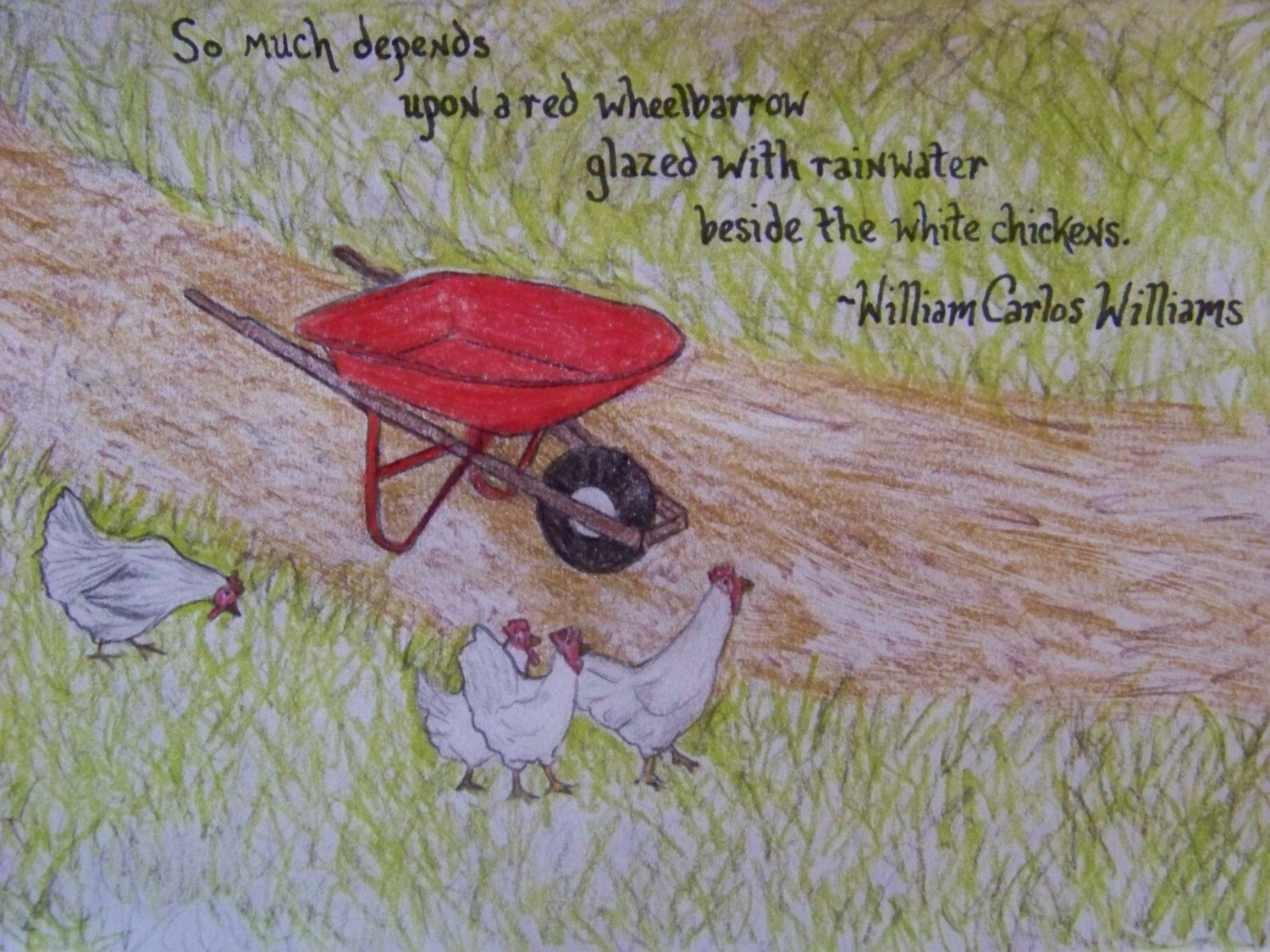
“ The Red Wheel Barrow “–such a simple yet eloquent poem. Following this lesson plan, your students will be able to write their own simple yet eloquent poems and feel like accomplished writers.
Learn More: NYLearns
11. An Ode to…
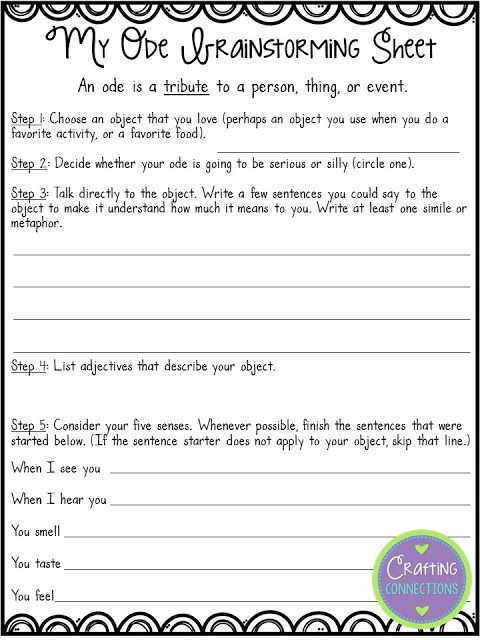
Reluctant writers are often intimidated by complicated writing ideas. By using a template like the one pictured above, your students will all be able to feel like poets as they create their own odes about a person, place, or thing.
Learn More: Crafting Connections
12. Story Starters
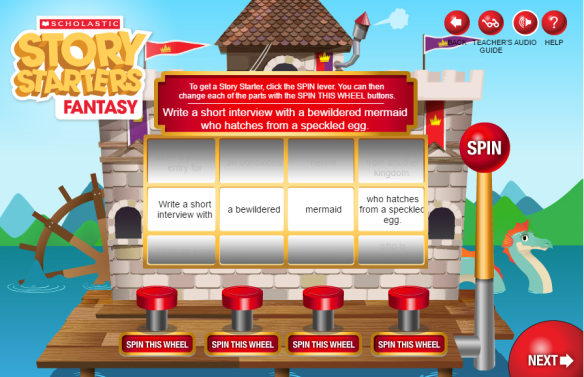
Story starters are a great way to help students begin their stories. If you have a digital classroom, the Scholastic story starter page is great because it can formulate much different writing prompts, helping engage all students.
Learn More: Scholastic
13. My Time Machine Trip
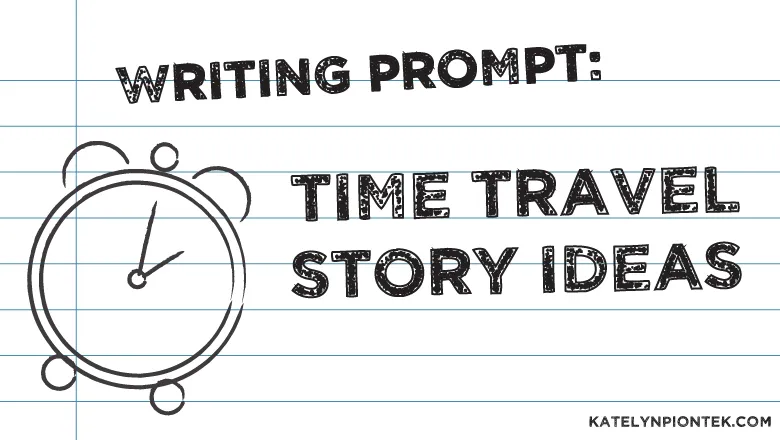
What is everyday life like in 1902? How about in 2122? Have students write stories about their experiences traveling through time using the attached worksheet. For those that need a little extra help, allow them to research time periods so they have an idea of what life was like then.
Learn More: K12 Reader
14. Writing and Math

This is a great assignment for a math class! Using the provided instructions, students are to write a story that explains to their boss the math they used while delivering packages. Since this assignment asks them to cover specific math concepts, make sure you cover them in class first (or hand this assignment to a math teacher and let them have at it!).
Learn More: Dr. Hamblin
15. How to Bake Cookies for Santa
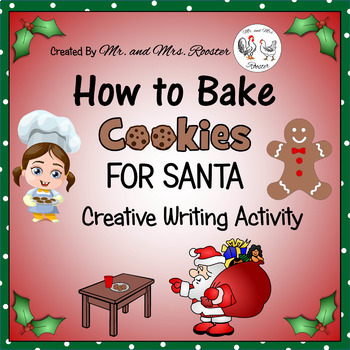
Seasonal writing activities are a great way to get kids excited around the holidays! One way to get descriptive paragraphs out of your students is through these instructions on how to bake cookies for Santa. The great thing about this assignment is all levels of writers can participate. Those that are more advanced can provide more details and struggling writers can still feel accomplished by explaining the cookie-making process!
Learn More: Teachers Pay Teachers
16. Diary Entry of a Literary Character
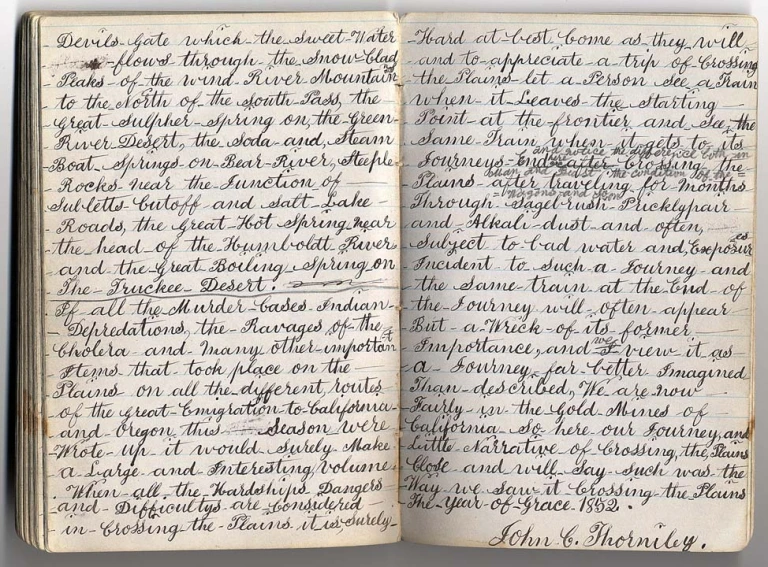
Another favorite among creative writing ideas is having students write diary entries in the voice of a character from literature. This can be a character from a book you read as a class or from a book they read on their own. Either way, it will showcase their creative writing skills and their knowledge of the character!
Learn More: Banana Magic
17. Write a Rant
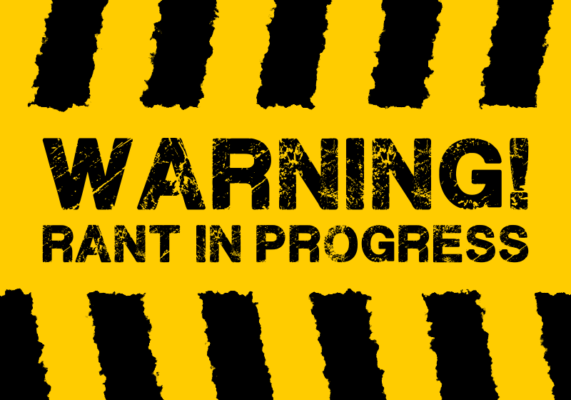
Writing a rant is a good assignment to use when you are trying to teach about the different voices we use when writing. When writing a rant, you are going to use an angrier, more aggressive voice than if you were writing a children’s story. This is a great warm-up to get students ready to write persuasive essays.
Learn More: Teachers and Writers Magazine
18. Write a Newspaper Story
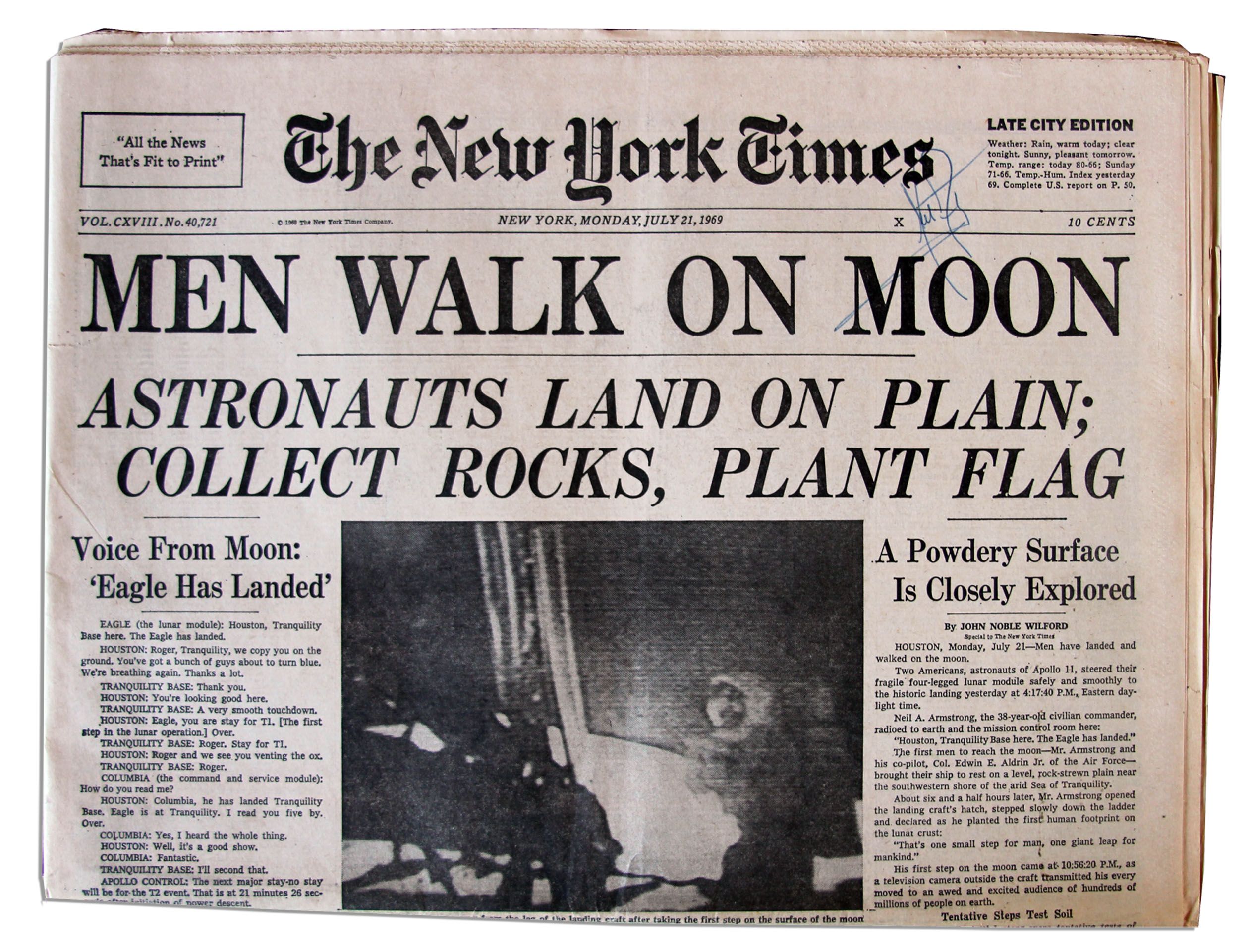
After reading through some newspapers to get ideas on how newspaper articles are formatted, have each of your students write their own article. When they are all done, you can compile a classroom newspaper!
Learn More: Nie Online
19. Coat of Arms
Studying Shakespeare? Maybe European countries where it was common to have a Coat of Arms? If so, this assignment is perfect for your class. Have students create a coat of arms and then write a few paragraphs explaining their choices.
20. A Letter to Yourself

Have students write letters to their future selves. Give them specific questions to answer like “where do you see yourself in five years? Are you happy with your life? Is there anything you would change?” And then in five years, mail the letters to their parents!
Learn More: Ms. Carota
- Character Education
- Classroom Management
- Cultural Responsive
- Differentiation
- Distance Learning
- Explicit Teaching
- Figurative Language
- Interactive Notebooks
- Mentor Text
- Monthly/Seasonal
- Organization
- Social Emotional Learning
- Social Studies
- Step-by-Step Instruction
- Teaching Tips
- Testing and Review
- Freebie Vault Registration
- Login Freebie Album
- Lost Password Freebie Album
- FREE Rockstar Community
- In the News
- Writing Resources
- Reading Resources
- Social Studies Resources
- Interactive Writing Notebooks
- Interactive Reading Notebooks
- Teacher Finds
- Follow Amazon Teacher Finds on Instagram
- Pappy’s Butterfly: A Tale of Perseverance
- Rockstar Writers® Members Portal Login
- FREE MASTERCLASS: Turn Reluctant Writers into Rockstar Writers®
- Enroll in Rockstar Writers®

Are you looking for ideas to help your students become successful writers? This post outlines the table of contents for 30+ writing mini lessons that has proven to help students write effectively. It will provide you with creative ideas to teach students sentence structure, paragraph writing, and narrative writing. It will walk you through the writing process in a step-by-step order that scaffolds and builds upon each other. These ideas are ideal for any writing curriculum and writer’s workshop.
1. Writing Mini Lesson 1- Brainstorming for Interactive Notebooks
2. Writing Mini Lesson 2- Complete Sentences
3. Writing Mini Lesson 3- Fragments
4. Writing Mini Lesson 4- Run-On Sentences
5. Writing Mini Lesson 5- How to Teach Paragraph Writing
6. Writing Mini Lesson 6- Relevant Details
7. Writing Mini Lesson 7- Closing Sentences and Clinchers
8. Writing Mini Lesson 8- Table of Contents and Progress Grade for Notebooks
9. Writing Mini Lesson 9- The Writing Process
10. Writing Mini Lesson 10- 3 Steps to Prepare for Narrative Writing
11. Writing Mini Lesson 11- Prewriting for Narrative Writing
12. Writing Mini Lesson 12- Task, Purpose, Audience for Narrative Writing
13. Writing Mini Lesson 13- Setting Writing Goals
14. Writing Mini Lesson 14- Graphic Organizers for Narrative Writing
15. Writing Mini Lesson 15- Plot
16. Writing Mini Lesson 16- Writing an Introduction for a Narrative Essay
17. Writing Mini Lesson 17- Writing the Body Section of a Narrative Essay
18. Writing Mini Lesson 18- Building Suspense and Climax in a Narrative Essay
19. Writing Mini Lesson 19- Developing Characters in a Narrative Essay
20. Writing Mini Lesson 20- Dialogue in a Narrative Essay
21. Writing Mini Lesson 21- Writing the Conclusion of a Narrative Essay
22. Writing Mini Lesson 22- Writing a Rough Draft for a Narrative Essay
23. Writing Mini Lesson 23- Revising a Narrative Essay
24. Writing Mini Lesson 24- Revising a Narrative Essay- DELETE
25. Writing Mini Lesson 25- Revising a Narrative Essay- ADD- Transition Words
26. Writing Mini Lesson 26- Revising a Narrative Essay- REARRANGE
27. Writing Mini Lesson 27- Revising a Narrative Essay- EXCHANGE- Rockin Beginnings
28. Writing Mini Lesson 28- Million Dollar Words- WORD CHOICE
29. Writing Mini Lesson 29- Variety of Sentences
30. Writing Mini Lesson 30- Jammin Conclusion of a Narrative Essay
31. Writing Mini Lesson 31- Crafting a Title
32. Writing Mini Lesson 32- CUPS to Edit
33. Writing Mini Lesson 33- CUPS to Edit- Capitalization
34. Writing Mini Lesson 34- CUPS to Edit- Usage
35. Writing Mini Lesson 35- CUPS to Edit- Punctuation
36. Writing Mini Lesson 36- CUPS to Edit- Spelling
37. Writing Mini Lesson 37- Peer Reflections
38. Writing Mini Lesson 38- Final Copies
Check out my FREE writing masterclass! CLICK HERE .
DO YOU NEED HELP SETTING UP INTERACTIVE NOTEBOOKS? CLICK HERE.
DO YOU NEED HELP SETTING UP YOUR WRITING CENTER? CLICK HERE .
READ A POST ABOUT A STEP-BY-STEP WRITING ® PROGRAM PROVEN TO MOTIVATE RELUCTANT WRITERS AND IMPROVE THEIR WRITING BY LEAPS AND BOUNDS!

TEACHING THE CHARACTER TRAIT PERSEVERE
Teaching the character trait honesty.


Writer’s Workshop in Middle School

Middle school writer’s workshop works for three reasons.
Because I’m limited to those 42 minutes, I run writer’s workshop differently than others with a

more generous schedule. While we don’t have the luxury of using weeks on end, we do have just enough time to make it work.
Mentor Texts
Prewriting and idea gathering.

Drafting and Mini-Lessons

Conferences
Let me explain how I do this with 22-29 students per class and our measly 42 minute periods. And me. Just me . Cue the long sigh.
2) I look specifically for evidence that they are addressing the skills from the mini-lesson.
There is no time for the type of lengthy conference there might be in an elementary classroom that

can bend the time constrictions. There is no time for a total read/thorough list of suggestions and comments. There is only time for a partial read with one or two quick comments. During our personal narrative unit, I might suggest that Bixby include some dialogue to advance the plot. Or I might ask Buffy if she can find a place to slow down the action and dig deep into some descriptive writing.
Peer Revision and Editing
Sharing and publishing final drafts.
Our publication parties are different depending on the task. They usually look like this: Argumentative Essays : They become authentic and purposeful when we turn them into letters to government representatives, as discussed here .
Writer’s Workshop

Narrative Writing Workshop for Middle School ELA

Fiction & Nonfiction Reading -Teach, Practice, Test BUNDLE – Middle School ELA

RACES Writing Introduction to Paragraph Frames DIGITAL & EDITABLE
- Skip to main content
NEW PROFESSIONAL DEVELOPMENT BOOK: Simplify Your Writing Instruction
Performing in Education®
- Simplify Writing®
- Simplify Science™
- Launch PBL™
- Simplify Your Writing Instruction
- Project-Based Learning Made Simple
- NGSS-Aligned Picture Books
- Daily Warm-Ups
- Escape Challenges
- Interactive Notebooks
- Project-Based Learning
- Picture Book Units
- How to Engage Every Student During Writing
- How to Deliver Insanely Engaging Science Lessons With Limited Time & Materials
- How to Support Your Teachers and Raise Writing Scores
- Search this site...
5 Mini-Lessons You MUST Teach for Creative Narrative Writing
Using creative narrative mini-lessons is a great way to teach students about small tidbits of writing without overwhelming them. These sessions are 10-15 minutes long, which is the perfect amount of time to engage elementary students without them losing interest. In my post about Writer’s Workshop , I stress the importance of teaching writing through mini-lessons.
Need writing lessons that reach all of your writers? The lesson I feature in this post is a part of this ⭐⭐⭐⭐⭐ lesson plan bundle.
Here are the 5 creative narrative mini-lessons you MUST teach!
Character development.
Your students all know about character traits, right? Build off of this knowledge to talk about character development in your creative narrative. Character development occurs when the author writes character actions or dialogue that gives us clues about the character’s traits, interests, and background.
In this creative narrative mini-lesson, students spend time during brainstorming coming up with a strong lead character, who happens to be an astronaut on the international space station. We use this brainstorming to help us write our rough draft, which includes character development. This is a great organizer to use after your mini-lesson to help students develop their main character.

Setting Development
It’s imperative to teach your students to develop their setting using descriptive words and phrases. Put up photos of different places and have students come up with words and phrases to describe them. Let them orally share with a partner as if they were introducing the place to someone that has never seen it. Have students close their eyes and describe a setting to them, then have them draw a picture of how they saw the setting in their mind. There are so many fun ways to teach setting development in a 10-15 minute mini-lesson!
Sequence of Events
Your students will probably remember the sequence words they’ve learned in past grade levels: first, next, then, last, etc. This creative narrative mini-lesson is a great time to reintroduce those words to show that a creative narrative has a sequence of events. Give them an example mentor text and then have them retell the story using these sequence words.
I’ve made a easy bookmark (included in the freebie above!) with these words that students can pull out if they get stuck. I’ve found that they are much more likely to use a bookmark as a resource than turn to a page of notes in their notebook – crazy, right ?

After you retell the sequence of events using those order words, change those words to stronger transition words. My favorite list of transition words can be found here .
First Immediately
Next By Now
Then Meanwhile
Finally Ultimately
After this mini-lesson, I send my students back to their seat to independently create a sequence of events for their own creative narrative. I encourage them to use transition words and we continue to work on these throughout our rough draft and revision stages.
Dialogue is one of the most important pieces of a creative narrative. It’s also one of the most difficult for students. I’ve often found myself asking, “Why can my students identify dialogue so easily, but they can’t write it correctly?” It’s all about practice, which means they need to be writing a lot of dialogue!
For this creative narrative mini-lesson, give students the rules to writing different types of dialogue. They’ll need to know how to:

- Make a new line of dialogue every time a new speaker talks
- Use quotation marks around the words being spoken
- Choose a fitting dialogue tag or attribution
- Use the appropriate punctuation depending on whether the tag is at the beginning, middle, or end of the dialogue
Strong Endings
Students really struggle with how to write a good, strong resolution to their story. You may notice that many of their stories either abruptly end, or end with “and that’s what happened” or “the end.” Teach your students about how experienced authors end their stories . Grab an ending or two from one of the short stories your class has read this year. Analyze the ending with your class during your mini-lesson and brainstorm the different parts of a strong ending.

Creative narrative writing can be so much fun, and using these 5 mini-lessons will turn a basic story into a rich, delightful tale!

Featured Resources in this Article
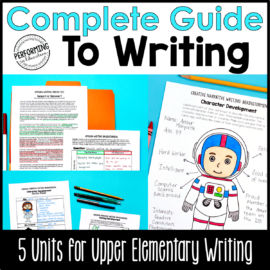
4th & 5th Grade Writing Units – Curriculum Bundle | Text-Based Writing & Prompts
$ 60.00 Original price was: $60.00. $ 30.00 Current price is: $30.00.
You May Also Enjoy This Article
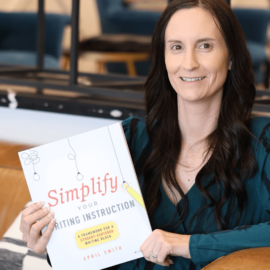
About the Author
April smith.
April began her career as a 5th grade teacher in 2008 and quickly developed a passion for creating engaging educational materials to share with fellow teachers. She now works with districts around the country, training their teachers and leaders on how to implement research-based strategies and differentiation techniques that meet the needs of diverse learners.
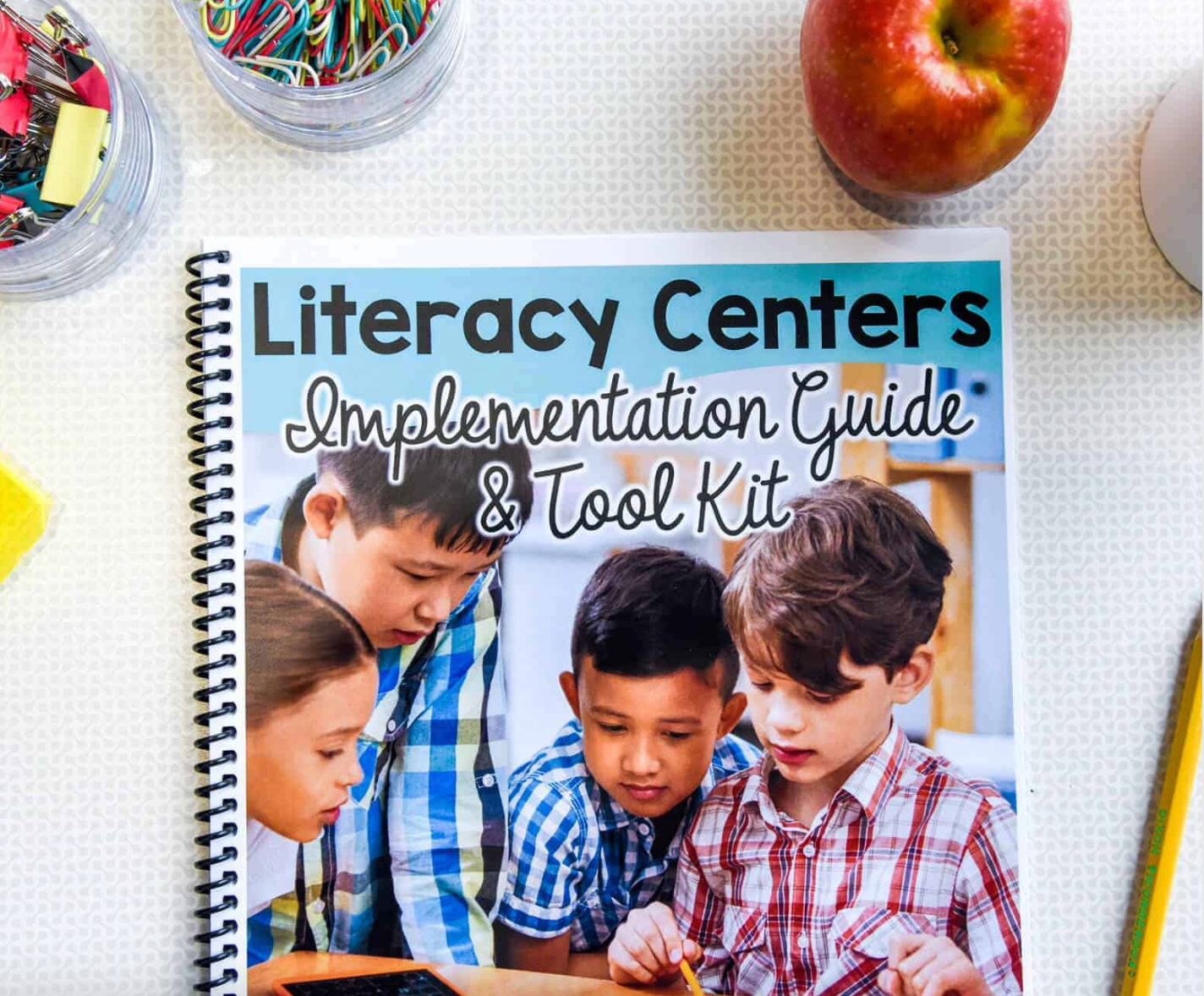
FREE Centers Guide

How to Create a Middle School Writer’s Workshop Your Students Will Love
- Post author: Marie
- Post published: April 27, 2020
- Post category: Classroom Management / Lesson Planning / Literature Programming / Uncategorized
- Post comments: 66 Comments
Every teacher has experienced introducing a writing assignment to the class and being met with eyerolls groans. Except for maybe the 3 or 4 students that are actually excited to hear about a writing assignment.

So then, how do you create a middle school writer’s workshop that your students will actually love? Students will learn to love writing when they are able to use is as an outlet to express themselves, their dreams, thoughts, complaints, aspirations, or anything else that middle schoolers want the world to know.
Table of Contents
What is Writer’s Workshop?
According to Wikipedia , Writer’s Workshop was created by Donald Graves, Donald Murray, and several other teachers, and then later popularized by Lucy Calkins (more on Lucy later).
They believed that if professional writers’ workshops are so effective for professional writers, then how much more successful would writer’s workshops for students be than traditional teaching methods?
Another great strength to the middle school writer’s workshop model is that students are writing from the start. So there isn’t a lot of dead time where they are trying to figure out some elusive lesson without putting it into practice immediately.
Many students fear writing because they don’t know how to get started. We have all seen those students, sitting there, staring blankly into space. But if we let them write what they want how they want, then help them to master their craft, they are already way into the process and much less intimidated by it.
What Lucy Calkins Brought to the Middle School Writer’s Workshop
Lucy Calkins began her work in 1981 when she became the founding director of Teachers College Reading and Writing Project. Her philosophy of student writing was that writing is a process consisting of definitive steps and all students can become excellent writers, not just certain gifted students.
And fortunately for classrooms since then, her point has been proven correct nationwide. Her work was particularly concentrated in New York City schools. Ms. Calkins and her team went into the schools and trained thousands of teachers in her techniques. The result was a dramatically improved writing program throughout New York City schools.
She has written over 20 books on the subject, the most popular one being the best-selling The Art of Teaching Writing.

What makes Ms. Calkins even more amazing is that this book is not just a revision of the old copy. It is the result of years of tweaking and updating her material to work with classrooms of today. And in cases where her methods could be transformed to make them even better, she didn’t shy away from denouncing the old and bringing in the new.
So this book is the product of an excellent methodology that was put into practice in thousands of schools, then improved upon to pass the test of real life. That is an impressive book and author that are willing to go to such lengths to keep the material fresh and relevant.
Let me warn you, though, this book is an incredibly meaty 550 pages. So, buy it now, implement what you can by reading bits until this summer, then, once you have time, you can dig deep and be ready to transform your class in the fall!
From Writing to Reading
As a side note, Ms. Calkins’ work extended into the reading realm as well. She maintained that it is imperative to allow children to read the things that are important to them. And the end result will be children that develop a passion for reading that follows them into adulthood.
It makes perfect sense when I think about all the times I was forced to read something I had no interest in. It was pure torture at times.
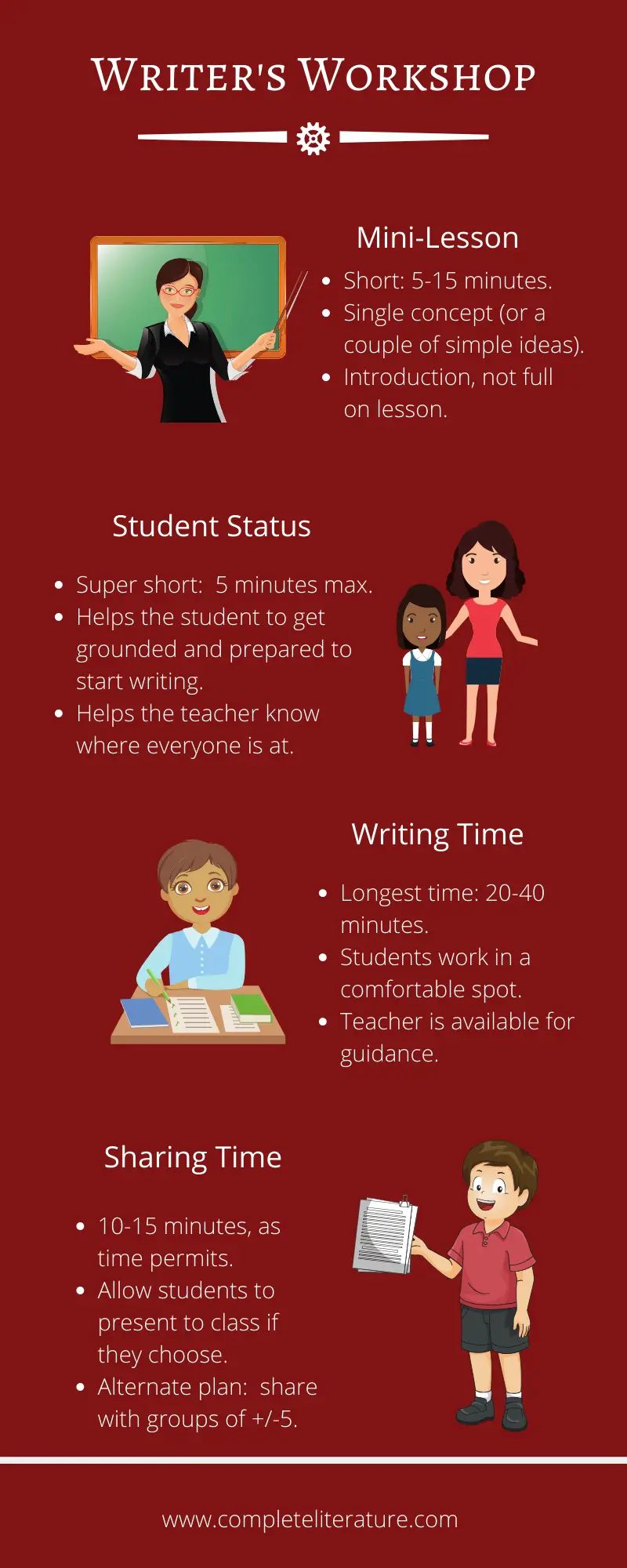
What are the Four Components of Writer’s Workshop?
There are four basic components to the middle school writer’s workshop. Some teachers will add or tweak a bit, but these four are pretty much the gold standard: mini-lesson, student status, writing time, and sharing time.
I know that sometimes it’s easier to cut out one or more of these steps for the sake of lack of time and just focus on the writing without all the “extra” steps. But it’s really important to fight through that temptation. Each one of these steps is critically important for your students to develop their thinking and writing process and skills. And if you can get that time in (even if you have to split it over a couple of days), it will be more than worth it in the long run.
I do understand that the clock is fighting against us when we only have a 45 minute period to do this in. But we have to be careful that the students don’t feel our battle with the clock. They don’t need the stress of trying to finish before that bell rings or else…
In these instances, it is so much better to continue to the next day. Everybody is more relaxed, and their brains are concentrating on what they are writing instead of the pressure.
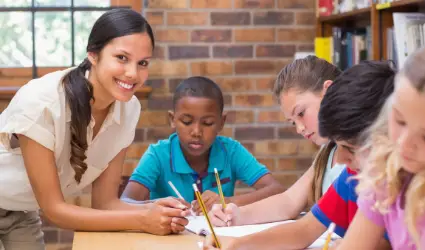
Mini-Lesson
So the mini-lesson is exactly that: a mini lesson that gives the students one or maybe two straightforward concepts. They will then take those concepts and immediately put them into practice instead of listening to the teacher continue to give details about that lesson.
The mini-lesson is designed to be only 5-15 minutes long. I have seen plenty of complaints from teachers that this is not nearly enough time to explain a concept well enough for the students to grasp it and then put it into practice.
And in the traditional teaching method, they are absolutely right. But in this case, the real learning is in the students’ writing. Keep in mind that when you get to the writing process, you will just reach out to the students that need help the most while the rest of the students are already on their way.
Over half of your class is going to recognize the writing concept already, especially if they are readers. We will get to that part more in depth in a little bit.
A Ready Example
What is important here is having an example that they can look at immediately. Then, rather than continuing on with the lesson, you will be turning it over to the kids to put into practice while it is still fresh in their minds.
So basically, if you are going to teach a lesson on capital letters, you would concentrate on one or two usages of capital letters. For example, you would teach them how names are always capitalized. And you may want to add in the concept of the first word of every sentence being capitalized because there is nothing they have to figure out regarding that rule. Of course, this is over-simplified for middle school age, but you get the point.
Once they start writing, be careful to only correct the work relating to that lesson or previous lessons you have already taught. That allows them to concentrate on the concept you are teaching. And they don’t get overwhelmed trying to remember ALL of the capitalization rules.
And that is how you are able to keep the lesson short and sweet!
Also, it helps to realize that you aren’t trying to cement the lesson at this point, just introduce it.
Student Status
Because your students’ work is generated by them, they are going to end up at all different levels of progress in their writing. Some students may be writing a short story, others may be writing a much longer piece. There can be as many different options as you have students in your class.
The main point here is that the students are choosing what they want to write about (within reason ) and what they want to do with it.
Because of this fact, you will not have all of your students in the same spot at the same time. And your primary goal is to guide them through the lesson itself rather than writing style or any aspect not related to the specific lesson. So this period of time is for you to get updates from your students on where they’re at and where they’re planning to with their projects.
This will actually be one of your students’ favorite times. They will enjoy showing you what they’re up to and seeing a smile on your face when you see how they are progressing.
Working Out the Details
You can choose to do this every day, or you can do it a little bit less often, especially as the year progresses and they start to get their own bearings.
Also, as the year goes on, you can have older student helpers come in to do this step with them, or even pair up or group your class to that they can do this step with each other. If you choose this method, you will still need to be able to check in with all the students periodically. But it won’t be as much as if you are doing all of the status checks yourself.
Some teachers will put a chart with pockets up on the wall so the students can put what stage of writing they are in. Those would be such things as brainstorming for ideas, forming an outline, drafting, proofreading, and publishing. Feel free to add or subtract as you work with your class.
And some teachers will allow the students to be writing more than one project at a time, which would make the chart-with-pocket idea more necessary. I did not do this because I thought it would get too chaotic for me. But other teachers do it well.
This step can be done at the beginning of writing time, while the students are settling in to start writing. It shouldn’t take any more than 5 minutes. You aren’t helping yet. But you can certainly take note of help you will be giving during writing time. This is just for you to evaluate where everyone is at and where they need to get to.
Writing Time
This is going to the longest time period of the class. Which is really the point–students should be writing as much as possible during writing class. It will be around 20 minutes long for the standard 50-minute class. Those in block scheduling will have a bit more liberty in their schedule for this part.
The writing time part of the middle school writer’s workshop is, of course, the most important part. That is because the more students actually write, the better they will become. And the more motivated they will be to continue writing right into adulthood.
What the Writing Process Looks Like
This step is actually a two-step process. While the students are writing, you will be conferencing with students around the room. In the middle school years, the majority of students will be quick to let you know they need help. But with every class, there are some that won’t. Be aware of those students and make sure to get to them and peek in on their work.
Over the course of a couple of days, you need to get to each student at least once. I kept a checklist to make sure I got to everyone. My brain isn’t as young as it used to be!
As for the students’ writing, my students worked so much better when I let them move around the room at will. They could work anywhere as long as they were working diligently, and as long as they were not being a distraction to other students around them.
Just a reminder: you are only correcting/guiding their work based on the current lesson and past lessons that they should have down by now. If you try to correct everything, especially at the middle school level, you will get defeated students that no longer want to write. Unfortunately, I know this from experience.
When Writer’s Block Threatens to Derail You
Writer’s block is real. We’ve all been there many times in our life. And I guarantee just about all of your students will face it head on.
But there are some great ways to combat it. You can just converse with your student for a few minutes. Casual conversation can help them think about what they’ve been up to, what they’ve been thinking about, what they’ve been watching, where they’ve been, or who they’ve been with. There’s a whole lot of inspiration in that.
It also helps to have a chart up somewhere in your classroom with inspirational pictures and ideas. Then they can always just look quickly at the list and pick something. Just make sure you are changing that list often enough to keep it fresh.
For some instant inspiration, check out my post on Timely Middle School Writing Prompts.
Sharing Time
Sharing time will be the other favorite part for your students–at least the extroverted ones. But even for the introverted students, they will generally be happy to be sharing their work. They will be grateful that this isn’t speech class!
Seriously, though, this is the point in time that they have learned a concept, put it to work on a project that was initiated by their own thoughts and made use of their own creativity. You guided them through the process as they did all of the work.
And now, they get to share that piece of themselves with the class, or small group, whichever you prefer. Or you could even ask how many students would like to present to the class.
At this age, you will have a good many that want to share with the whole class. And honestly, I found it as fun as the other students.
Many students will enjoy hearing each other’s work. And they will be inspired as they continue on to the next project.
Another huge benefit to this: you are not taking all of those papers home to read through and grade all night. You can make some notes as they are reading. And with that, the majority of your work is done! This alone is worth its weight in gold.
While the students are presenting and you are evaluating from a distance, it also feels like a chill time for you and your students. Although if you try to do this right after lunch you may find yourself and some students nodding off!
Why Each Step is So Important
The biggest reason each step in the middle school writer’s workshop process is so important is because you are helping the students to develop a comfort with writing. And really, just like anything else, the way to become comfortable with something is to practice it regularly.
The four steps help them to keep on track with their thoughts, goals, and how they plan to get there. And the process helps you to be able to efficiently help a large classroom as they work in their own time and at their own pace. This is a win-win for everybody!
The biggest takeaway here is that the students are in control of their writing. That makes them authors! When you share this information with them, they will take even more pride in their work.
Check out this short video on how middle school writer’s workshop helps the students to take ownership of their work:
So this is middle school writer’s workshop in a nutshell. Yours will look different than mine. But they will all have basically the same components.
One of the most exciting things you will see come out of this is how much your students’ writing improves throughout the year. You will be amazed and proud of them for a job well done. And you will see how much quicker your students catch on to the writing process. Seeing their confidence grow is such a rewarding thing.
Education Next: The Lucy Calkins Project
If you liked this article, I think you will like some of these other articles:
Timely Middle School Writing Prompts
12 Significant Ways to Improve Student Writing
12 Ways to Improve Reading Skills
Seven Styles of Learning and How They Apply to Your Students
Related posts:
Please share this share this content.
- Opens in a new window X
- Opens in a new window Facebook
- Opens in a new window Pinterest
- Opens in a new window LinkedIn
- Opens in a new window Viber
- Opens in a new window VK
- Opens in a new window Reddit
- Opens in a new window Tumblr
- Opens in a new window Viadeo
- Opens in a new window WhatsApp
You Might Also Like
Can a teacher teach without a lesson plan.

Why Social Emotional Skills are so Important in Middle School

Does Listening to Music Help Students Focus?
This post has 66 comments.
There are so many wonderful resources for children and I’m glad that there are writers workshop to explore creativity.
Your students will thank you later, if they aren’t yet now. As we grow older, we realize just how useful reading and writing is in our careers and in daily life. I like how you would like to capture your target audience for your workshops. I wish we had that when I was younger.
Making learning fun is not an easy task. You have nailed it in this article.
Thank you, Melissa!
I wish we had focused more on writing during English class. We didn’t do much creative writing, just essay writing and comprehensions. They were fine and I don’t mind writing essays, but I would have loved to learn more about creative writing and structure.
I agree. I didn’t get much of that until college. I think teachers are afraid that there just isn’t enough time to add it. But over time, it actually saves time because the students learn it better and faster when they are using it and not just memorizing the facts.
My daughter is in middle school and I think she’d like this. Granted, she usually hates when they have to share what they’ve written with the class.
Yes! That is why I always base it on the students’ desire and not force them. It would be better to just let those students share in a small group so they don’t stress about something that isn’t that necessary.
I have seen that students working in a comfortable seat have helped them concentrate on their writing. I wonder what research will find when it comes to flexible seating options and student outcomes.
Research has shown that students are way more productive when they are comfortable. 🙂
As a kid I enjoyed writing so much. As I grew up that changed, I dreaded the term paper here and there. Now, I blog which I find kind of ironic. These workshops are great and being able to share their work is great.
I wonder if you hated writing the term papers because you had a lack of time and because you weren’t that interested in the subjects. It may have been a different story if you liked what you were writing about. Or it could have just been that you were a kid/teenager!
I have two middle schoolers. I shall try this to get them to write more
I hope it works well for you!
Your concept of mini lesson us really amazing…….I have listen that comfortable seat gives children full relaxation….. thanks for sharing.
I love this! In wonder how I could spin this for the music classroom – maybe in a composition style assignment? Hmmm…
Oh my gosh, that would be amazing! I love how you always take an idea and just run with it!
This is such a great idea to help them get comfortable with writing! I know for myself that having unstructured time to just write allows me to be so much more creative too.
Great ideas to encourage creative writing. My daughter will do this willingly and enjoy but my boys need more encouragement.
Haha, I had the same exact issue with my kids. The girls love to write, the boys think it’s torture.
This is so useful! I have a brother around this age and we both love reading and English so maybe I could do stuff like this with him while in quarantine!
I love the way that you’ve laid this out! These are definitely useful tips that I can put to use in my own teaching endeavors.
Wow nice idea these are absolutely awesome tips to encourage creative writing.
I grew up having the right people teach me how to improve my writing skills. and I will be forever grateful to them. 🙂 Im happy that there are initiatives like this. keep it up!
I always told my own kids that writing is a critical life skill in all of life. Fortunately they believed me and ran with it. The girls a bit better than the boys, lol.
As a non-teacher parent currently stuck at home homeschooling the kids, this is definitely helpful in building out my own psyche to teach, and how to keep them engaged. Thanks!
I hope it helps you!
This was so helpful!! Thank you!
Love this post. As a former journalist and current writer, I cannot emphasize the importance of communicating through the written word. Thanks for sharing!
This is a great post. You are really helpful in how you set up a writing session for children. Writing is a great tool of expression and love🤗
This is really good for children to know the basics of writing. When I was growing up, I struggled to use proper punctuations and even the simple subject-verb agreement. Great post you have!
Thank you, Waren.
Wow! How I wish there are writing workshops too especially for kids here in our country.
Maybe you could do a neighborhood group with kids on the weekends? Especially for the kids that love to write!
A writer’s workshop would definitely improve their writing skills. Writing will also help their creativeness and imagination
It’s a great way to help them when they get stuck on what to write!
I love how this is set up and it really is a great way to help improve writing skills.
I loved the creative writing classes I took in high school and college. You reminded me that I really miss writing, I need to get back to it.
This is a fantastic resource. I think the key to learning is making it fun, and this workshop reallyi does that. I love how in-depth it was, as well. You can’t possibly screw it up!
This post is a mini lesson that guides an educator to add more resources for her students. Very helpful.
I would love to sign up my son for a writer club like this one, that would be so beneficial and I know he’d like it…
Awe, I love this! I started writing at a very young age and it stuck into adulthood. Anything to shape this craft at a young age is great!
Love these tips! These tips have me wanting to do a writing workshop!
I wish I had an English teacher that encouraged more creative writing like this! I didn’t know how much I enjoyed writing until I was much older!
This is so amazing, you shares some really great information. I totally wish I had resources like this bad in the day.
as someone who used to be a h.s. teacher, i love your tip — be careful to only correct the work relating to that lesson or previous lessons you have already taught. that is so true! well written.
This is so amazing, you share some really great information. Well written
This is so helpful tips! My son love writing, im going to encourage him to sign up in this writing club to enhance his writing skills.
I think it’s a great way to get them to write for sure. I am all about interactive learning it always keep kids captivated.
This is a great idea for middle school teachers as writing is so important!
I used to hate writing when I was in school and now I have come to love it 🙂
I remember that I did not like writing assignments at all when I was in a middle school. I whish that our teacher would have created writer’s workshop or made the assignment more interesting.
Writer’s workshop is a great idea wish I had it back when I was in school. As much as I absolutely love and enjoy writing now back in school writing assignments were at times nerve-wrecking.
Great advices and tips! I like getting involved in Middle School Writer’s Workshop. I usually mentor kids to write.
My daughters love to write stories, and they always seem eager to tell me about the plot, the characters, etc. I think having a writer’s workshop is great for kids like them.
Amazing tips for a school writing workshop. I am sure these study will gain so much info.
In todays time, this is very helpful specially for homeschooling activities. I am sure this is of good use.
Thank you for sharing these great tips. Very helpful for anyone working with kids
This sounds like an awesome idea! I’m sure there are many out there who will put this idea to good use! Thanks for sharing.
I hope so, Shannon!
I think the idea of a writer’s workshop for students is awesome. Teach for a few minutes, then write, teach then write. The perfect way to learn and become a better writer.
I am soon going to be a teacher and I can’t wait to implement your brilliant ideas!
These are really great tips. I have a friend who is a teacher in school. I will share this article with her. I know she will be more than interested in this.
What a fabulous way to get your kids into writing! These are such awesome tips to incorporate more writing. I’m going to try to incorporate this with my own kids!
Kileen cute & little
These are great steps to create Middle School Writer’s Workshop. It’s really helpful for new teachers and of course to students!
oh i love this. i know a few teachers that would love this and i will have to send this to them.
Leave a Reply Cancel reply
Yes, add me to your mailing list
This site uses Akismet to reduce spam. Learn how your comment data is processed .

Jump to navigation
- Inside Writing
- Teacher's Guides
- Student Models
- Writing Topics
Minilessons
- Shopping Cart
- Inside Grammar
- Grammar Adventures
- CCSS Correlations
- Infographics
How do I use minilessons in my classroom?

Do you want quick lessons that teach concepts or skills? Each 10-15 minute minilesson presents a concept and engages students in an activity. Minilessons are optimized to display on your interactive whiteboard, smart phone, or anything in between.
Minilessons Writing

Adjusting Your Writing Voice
Adjust voice for audience and purpose.
Analyze the Communication Situation
Think of the sender, message, medium, receiver, and context.

Analyzing the Medium of a Message
Improve students' media literacy.
Analyzing with a Cause-Effect Chart
Analyze causes and effects of any topic.

Analyzing with a Line Diagram
Analyze parts of a topic with a line diagram.

Analyzing Writing Prompts
Practice studying the parts of a test prompt.

Asking and Answering the 5 W's and H Questions
Teach students to collect key details.
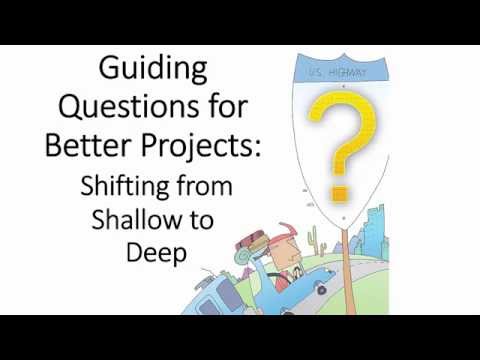
Asking Bigger and Better Questions
Teach students to form better questions.

Avoiding Double Subjects
Help students avoid double subjects.

Choosing the Right Coordinating Conjunction
Learn how to choose precise connecting words.

Closely Read with SQ3R
Closely read with SQ3R .

Combining Choppy Sentences
Combine sentences for better flow.

Comparing Myself to a President
Compare yourself to a president.
Comparing with a Venn Diagram
Analyze similarities and differences.

Confusing “Its” and “It’s”
Help students sort out its and it's .

Correcting Capitalization 1
Correct capitalization.

Correcting Capitalization 2

Correcting End Punctuation
Insert end punctuation in the paragraph.

Correcting Subject-Verb Agreement 1
Make subjects and verbs agree in number.

Correcting Subject-Verb Agreement 2


Creating a Dialogue Journal
Engage in a written conversation.
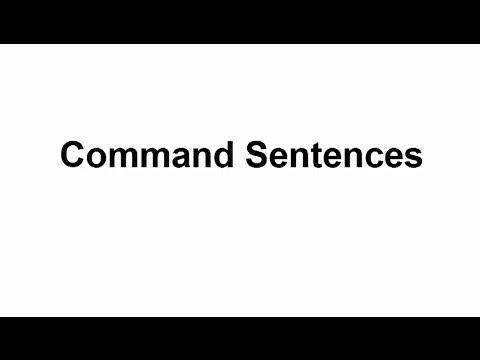
Creating Command Sentences
Help students build command sentences.

Creating Flowcharts
Chart a process.

Creating Pie Graphs

Deciding When to Use Formal and Informal Language
Match language with purpose and audience.

Developing an Opinion Statement
Develop a main claim.

Discovering Narrative Strategies
Use shared inquiry to develop personal narratives.

Discovering Rules for Their, There, and They’re
Use shared inquiry to learn their, there, and they're .

Distinguishing Argumentation from Persuasion
Study argumentation/persuasion.

Drawing a Life Map
Help students gather ideas for narratives.

Elaborating Ideas Using Different Levels of Details
Teach elaboration with levels of detail.

Elaborating Ideas with Compound Sentences
Learn how to add new details to sentences.

Elaborating in a Food Review
Help students practice elaboration.

Elaborating Sentences
Add detail to sentences.

Evaluating Advertisements
Evaluate advertisements.

Evaluating Sources of Information
Evaluate sources with a checklist.
Evaluating with a Pro-Con Chart
Analyze good and bad with a pro-con chart.

Fixing Run-On Sentences
Correct run-on sentences.

Fixing Sentence Fragments
Fix sentence fragments.

Forming a Focus
Help students write strong focus statements.

Forming a Thesis Statement
Focus on part of your topic.

Forming Pronouns: Possessives and Contractions
Teach possessives and contractions.

Freewriting for Writing Topics
Have students freewrite for topic ideas.

Idiom Safari
Find idioms on the Internet.

If I Were a President's Pet
Imagine being a president's pet.

If I Were President
Think about being president.

Keeping a Learning Log
Tips for starting and maintaining a learning log.

Literal Idioms
Use idioms literally in a sentence.

Make Abstract Ideas Concrete
Make concrete representations of abstract ideas.

Making Rhetorical Appeals
Appeal to ethos, logos, and pathos.

Malapropism Mania!
Find and fix malapropisms.

One-Month Miracles
Devise creative solutions for impossible tasks.

Performing "Systems Checks" of Your Writing
Help students self-evaluate their writing.

Performing a Stop 'n' Write
Pause and reflect on your reading or learning.

Pun-ishing Idioms
Create puns using literal idioms.

Punctuating Dialogue
Teach quotation marks with end punctuation.

Rate Your Listening
Take a listening survey.

Reading as a Writer
Learn how to discover writing strategies from reading models.

Replacing Dull Verbs with Vivid Verbs
Energize students' writing with vivid verbs.

Replacing General Nouns with Specific Nouns
Identify and replace general nouns.

Selecting Topics with the Basics of Life
Use broad subjects to find specific topics.

Sentence Modeling with the Masters
Practice sentence modeling.

Sequencing with a Time Line
Use time lines for critical thinking.

Sharing Fiction with a Partner
Use shared inquiry to read fiction.

Spell the Right Word
Practice spelling and usage.

Starting a Journal
Help students begin journal writing.

Starting Stories: 5 Great Beginning Strategies
Practice five strategies for starting a story.

Summarizing Ideas in a Nutshell
Practice one-sentence summaries.

Thinking About a Process
Prepare students for how-to or process writing.

Understanding Context Clues
Learn about context clues for vocabulary.
Understanding the Plot Line
Understand the plot line.

Usage Mnemonics
Create memory aids for usage.
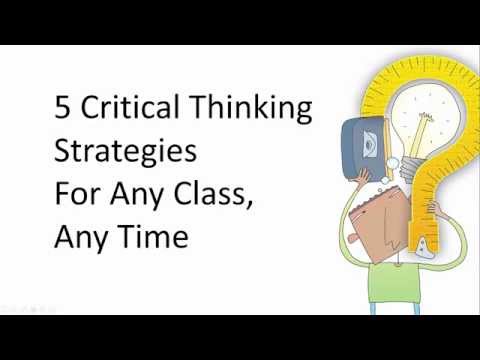
Using 5 Critical Thinking Strategies
Use this video to help students think critically.

Using a Peer Response Sheet
Teach students to write peer responses.

Using Anecdotes in Formal Writing
Add a narrative touch to formal writing.

Using Apostrophes in Contractions and Possessives
Use apostrophes with contractions and possessives.

Using Commas in a Series
Use commas in series.

Using Commas in Dates and Addresses
Use commas in dates and addresses.

Using Commas with Numbers and Interjections
Use commas with numbers and interjections.

Using Context Clues
Learn new words with context clues.

Using Hyphens with Compounds and Fractions
Use hyphens in compounds and fractions.

Using Numbers
Use numbers correctly.

Using Parallel Structure
Teach students to write using parallel structure.

Using PAST to Understand Assignments
Teach students to analyze writing assignments.
Using Perspective Shifting to Imagine History
Help students gain a historical viewpoint.

Using Perspective Shifting to Persuade Readers
Help students see from readers' perspectives.

Using Perspective Shifting to Understand Others
Help students improve empathy.

Using Quotation Marks
Use quotation marks with titles and quotations.

Using Signal Phrases
Smoothy integrate sources in your writing.

Using the Right Word
Use the right word.

Using Time-Order Transitions
Teach about chronological transitions.

Using Transitions to Add Information and Emphasis
Help students add information and emphasis.

Words in the Wild
Search the Web for correct usage.

Would You Rather?
Practice usage with a game.

Writing a "Showing" Paragraph
Help students show instead of tell.

Writing a 5 W’s Story
Help students write realistic stories.

Writing a Diary of a Famous Figure
Have students creatively narrate.

Writing a Family Story and Historical Marker
Inspire students to write family stories.

Writing a Four-Star Food Review
Use this prompt to spark students' creativity.

Writing a Historical Dialogue
Create a dialogue with a historical figure.

Writing a List Poem
Learn how to write a list poem.

Writing a Tumble-Down Poem
Help students write a free-verse poem.

Writing an Arts & Performance Review
Review a song, dance, poem, or piece of artwork.

Writing an InstaMemory
Help students narrate and describe.

Writing Back-and-Forth Stories
Inspire students to collaborate in writing.

Writing Descriptions That "Show" Instead of "Tell"
Teach students to use sensory details.

Writing Freely and Rapidly
Teach student to freewrite for ideas.

Writing: Now how do I get out of this one?
Assign this prompt to spark students' creativity.
Minilessons 21st Century Skills
21st century skills.

Analyzing Point of View in Media
Review media for point of view.

Analyzing the Receiver of a Message
Teach students to think about audience.
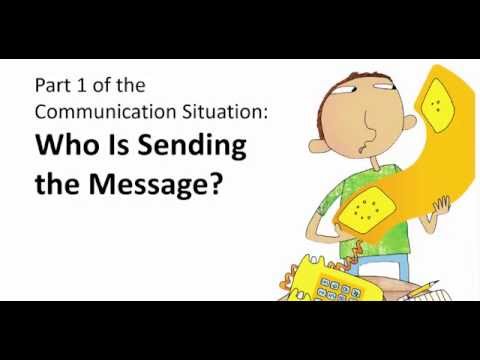
Analyzing the Sender of a Message
Help students think about sources.

Checking the Emotion Thermometer
Help students express intensity of emotion.

Class Mascot
Create a memorable class mascot.
Create a Memory Palace
Use spatial awareness to improve memory.

Creating a Growth Mindset
Develop a growth mindset.

Creating a Plan
Help students plan projects.

Creating a Rubric to Evaluate Projects
Create a quick rubric for any project.
Detecting Fake News
Ask critical questions to detect fake news.

Detecting Media Bias
Practice detecting bias.

Discovering Word Origins (Etymology)
Use shared inquiry to find word origins.

Guarding Against Confirmation Bias
Read news from an unbiased point of view.

Recognizing Bullying
Help students recognize bullying.
Recognizing Logical Fallacies 1
Learn to spot logical fallacies.

Recognizing Logical Fallacies 2

Seeing Emotion in Facial Expressions
Create mindfulness of facial expressions.

Seeing Emotions in Body Language
Create mindfulness of body language.

Setting and Reaching Goals
Help students set and reach academic goals.

Solving Problems Critically and Creatively
Help students improve problem solving.

Starting Stories with Suspense
Inspire storytelling with original story starters.

Thinking About the Context of a Message
Teach students to think about context.

Time Surgeons
Change one small thing to change history.
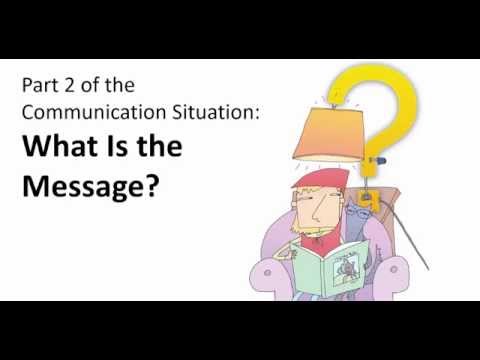
Understanding a Message's Subject and Purpose
Teach students how to analyze messages.

Understanding the Parts of the Brain
Teach brain parts and functions.

Using Positive Self-Talk
Replace negative with positive self-talk.

Writing a Creative Synopsis
Create a synopsis of a book, TV show, or event.

Writing a Fictionalized Diary
Have students write a diary entry of an everyday object.
Minilessons Social-Emotional Learning
Social-emotional learning.

Calming Down with Deep Pressure
Teach deep pressure to calm students.

Doing Random Acts of Kindness
Help students be kind to each other.

Expressing Emotions Through Drawing
Help students draw their feelings.

Expressing Emotions Through Movement
Connect movement to emotion.

Journaling About Intuitions
Track the ways your intuitions guide your decisions.

Labeling Your Feelings
Calm your body and mind by voicing your feelings.

Learning to Say No
Help students learn refusal skills.

Taking Action Against Bullying
Teach students strategies for staying safe.

Using 5-5-5 Breathing to Calm Down
Teach 5-5-5 breathing to calm students.

Using Bodily Meditation
Open a line of communication between body and brain.

Using Progressive Relaxation
Use progressive relaxation to calm students.
- Share full article
Advertisement
Supported by
Picture Prompts
142 Picture Prompts to Inspire Student Writing
A school year’s worth of short, accessible image-driven posts that invite a variety of kinds of writing.

By The Learning Network
We’ve been publishing our Picture Prompts series four days a week since 2016. Below, we’ve rounded up all the prompts we published for the 2023-24 school year.
These short, accessible, image-driven prompts invite students to pen short stories, poems and memoirs; share experiences from their lives; analyze illustrations, graphs and charts; and tell us their opinions on hot-button issues.
You can find even more in our roundups for the 2022-23 , 2021-22 and 2020-21 school years, as well as in our collections of 125 picture prompts for creative and narrative writing and 25 spooky images for writing scary stories .
To learn how you can use Picture Prompts to build literacy skills, promote critical thinking, inspire discussion and foster creativity in your classroom, watch our three-minute tutorial video or our on-demand webinar . For dozens more ideas, see our lesson plan “ How to Teach With Our Picture Prompts (and Other Times Images) .”
If you use this feature with your students, or if you have other ideas for how to use photos, illustrations and graphics to encourage writing, let us know in the comments.
Share experiences from your own life.
Boys and Cologne Soapbox Derby Graphs Old and Young 2,000 Bags Spring Holidays Baking Spring ‘Floor Person’ Checking Your Watch ‘Wild’ Ice Skating Lunar New Year Hot Pot Distracted Walking Breakfast Wild Weather Maps Healthy Habits Holiday Classics Compliments Family Drama Thanksgiving Dinner Libraries Scary Movies Carving Pumpkins Fall Friday the 13th Our Own Language Skydiving Lazy Days Back to School
What story does this image inspire for you?
Falling Into a Hole Friends? Up, Up and Away! Pet Alligator Shadowy Figures Help Fishing in a Stream Tiny House Rats on a Dog Walking Away Public Selfies Hidden Doorway Playing Dominoes Point of No Return Sunset by the Water Valentines Biking Climbing a Ladder Reflections Happy Creatures Snowfall Blindfolded The Red Planet Dog TV Walking Through Town People and Penguins Witches on the Water Spying Show Time! A Wave Goodbye Ancient Arrow A Hand Up Darkened Library The Concert
What do you think this image, chart or cartoon is saying?

Pink Head, Green Check City Street Lapel Buttons One Seat Underwear on a Statue Justices An Elevator Filled With Robots Flying Plastic In a Box Watching Snacks and Drinks Tree Stump Behind Columns Lying in Bed Soccer and Dollars Two People Sitting Package and Globe Hot-Air Balloon Civil Conversation Raking A Shadow Parent and Child Atop a Cellphone The Super Wealthy Brick Wall Eagle and Ropes Painting Blank Space Exercise Football and Bag of Money Worm in an Apple Head in the Clouds
What’s your opinion on this issue?
‘Cowboy Carter’ New Stamp Design Prizewinning Miniature Poodle Cicadas for Dinner Met Gala Student Orchestra Tech in the Classroom Salt Movie Memorabilia 100 Years of Furniture March Madness Texting Styles Concerts Leap Day Broadway Shows Ice Cream Celebrity Feuds A.I.-Generated Faces World’s Largest Cruise Ship Your Energy Playlist Taylor Swift and the N.F.L. In-and-Out Lists Contenders Coveted Cup Your 2024 Most-Anticipated List 2023 in Pictures Style in 2023 $700 Million Deal Dream Décor Skipping School Giving Tuesday Pop-Tart Critic Time Change Pink Jersey Floating Home The Mall Breaking Police Robot Celebrity Relationships Fall Music New iPhone Tiny Homes Floods in Libya Football Season Land, Man and Sky Fall Video Games
Students 13 and older in the United States and Britain, and 16 and older elsewhere, are invited to comment. All comments are moderated by the Learning Network staff, but please keep in mind that once your comment is accepted, it will be made public and may appear in print.
Find more Picture Prompts here.
THE BEST Elektrostal Art Museums
Art museums in elektrostal.
- Specialty Museums
- Art Museums
- History Museums
- 4.0 of 5 bubbles & up
- Good for Kids
- Good for Big Groups
- Adventurous
- Budget-friendly
- Good for a Rainy Day
- Hidden Gems
- Good for Couples
- Honeymoon spot
- Good for Adrenaline Seekers
- Things to do ranked using Tripadvisor data including reviews, ratings, number of page views, and user location.

1. Electrostal History and Art Museum
- SMP WEDDINGS
- SMP’S VENUE BLOG
- LITTLE BLACK BOOK BLOG
- LBB INDUSTRY BLOG
- DESTINATION
- NEW ENGLAND
- THE NORTHWEST
- THE MIDWEST
- THE SOUTHWEST
- THE SOUTHEAST
- THE MID-ATLANTIC
- THE TRI-STATE AREA
Russia Weddings
- Real Weddings
- Bridal Week
- Engagements & Proposals
- Seasonal Wedding Trends
- Bridal Beauty
- Wedding Fashion Trends
- Vendor Guide
- DIY Projects
- Registry Guide
- Engagements & Proposals
- by Melissa Hammam
- comments ( )
Hands up if you’re ready to be dazzled! From a ceremony structure designed to float on water to a jaw-dropping reception room with flowers blooming from every service, we’re swooning over every bit of this wedding. If you can believe it, that’s just the beginning. Julia Kaptelova artfully shot every detail, like the ballet performance guests were treated to and snow falling from the ceiling for the first dance! Prepare to be amazed and take a visit to the full gallery .

From About You Decor … Our design is a symbol of dawn and a distant endless horizon. Ahead is a long, happy life without any borders. An international couple, Pavel and Cherry, met in London and have been walking together for many years.
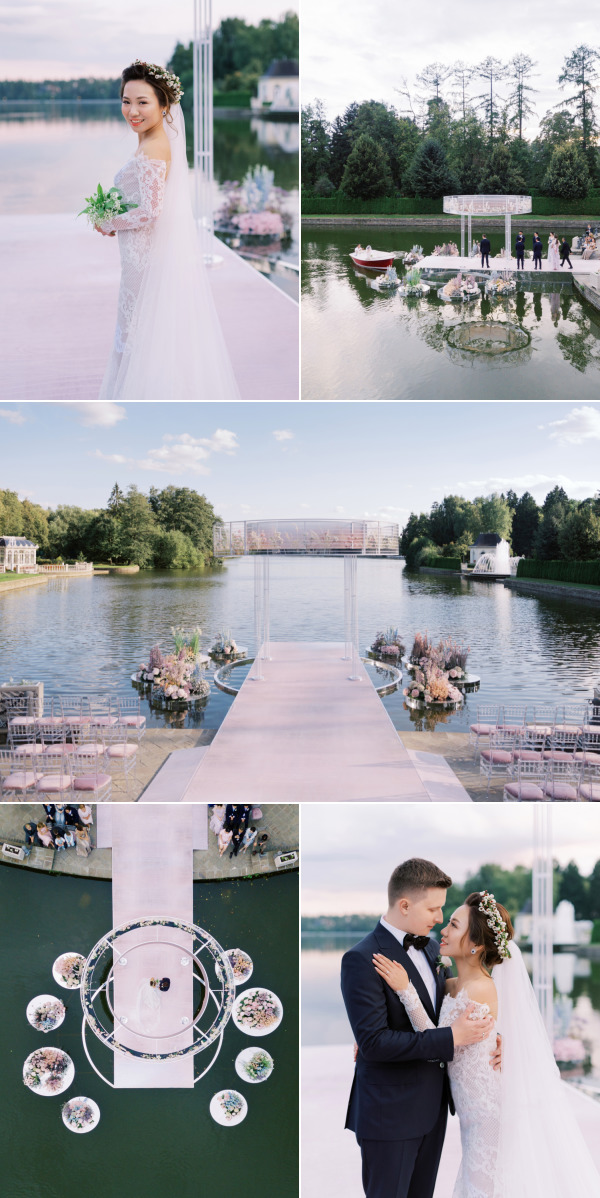
From the Bride, Cherry… My husband and I we decided to have our summer wedding in Moscow because the city is where his roots are. As we knew we were going to have the other wedding ceremony in China, we wanted our Moscow one to be very personal and intimate. We’ve known each other since we were fourteen, together with many of our friends whom we’ve also known for a decade.

I didn’t want to walk down the aisle twice so the plausibility of my request quickly came into discussion. The open pontoon stage was constructed in order to facilitate the bridal entrance on water, although there were concerns about safety as the last thing we wanted was probably a drowned bride before she could get on stage, picture that! I have to say on that day it wasn’t easy to get on the pontoon stage from the boat, in my long gown and high heels. Luckily my bridesmaids still noticed even though they stood the furthest from me on the stage, and helped me out without prior rehearsal. My girls could just tell whenever I needed a hand or maybe they were just so used to my clumsiness. Who knows 😂
We all love our photographer Julia! She’s so talented and her style is so unique. Our beloved host Alex is exceptional who made everyone laugh and cry. It was truly a blessing to have so many kind and beautiful souls on our big day. Thank you all!

[iframe https://player.vimeo.com/video/384992271 600 338]
| Share this gorgeous gallery on |
Photography: Julia Kaptelova Photography | Wedding Planner: Caramel | Cake: Any Cake | Invitations: Inviteria | Rings: Harry Winston | Band: Menhouzen | Grooms attire: Ermenegildo Zegna | Wedding Venue: Elizaveta Panichkina | Bridesmaids’ dresses: Marchesa | Bridesmaids’ dresses: Alice McCall | Bride’s gown : Jaton Couture | Bride’s shoes: Manolo Blahnik | Decor : About you decor | Earrings: Damiani | Muah: Khvanaco Studio | Video: Artem Korchagin
More Princess-Worthy Ballgowns

I’m still not convinced this Moscow wedding, captured to perfection by Sonya Khegay , isn’t actually an inspiration session—it’s just that breathtaking. From the beautiful Bride’s gorgeous lace wedding dress and flawless hair and makeup to the pretty pastel color palette and stunning ceremony and reception spaces, this wedding is almost too good to be true. Do yourself a favor and see it all in The Vault now!
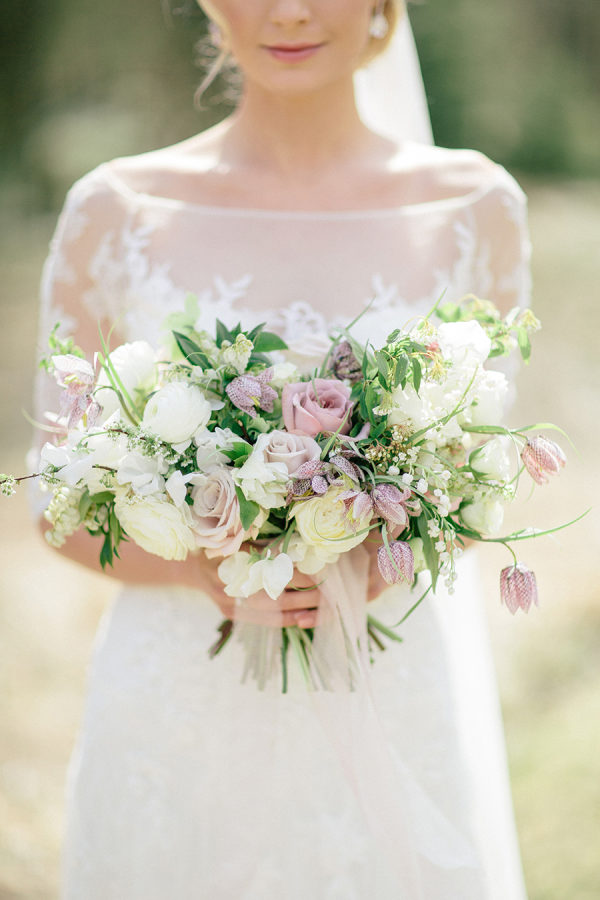
From Sonya Khegay … It was the last day of April and still very cold in the morning. The weather forecast wasn’t pleasing and no one expected that the sun would come out, but miracles happen and light rain gave way to the warm rays.
I love how all the details went together, you could feel the harmony in everything throughout the entire wedding day from the morning until the fireworks.
A gentle look of the bride, elegant but so airy and unique decor, the fresh and light atmosphere of early spring and, of course, true happiness in the eyes. My heart becomes so warm from these memories, it is always a pleasure to see the birth of a new family of two loving hearts.
Photography: Sonya Khegay | Event Design: Latte Decor | Event Planning: Ajur Wedding | Floral Design: Blush Petals | Wedding Dress: La Sposa | Stationery: Special Invite | Bride's Shoes: Gianvito Rossi | Hair + Makeup: Natalie Yastrebova | Venue: Rodniki Hotel
- by Elizabeth Greene
You really can’t go wrong with simple: a beautiful Bride , perfectly pretty petals , loved ones all around. But add in an amazing firework show to cap off the night and simple just became downright extraordinary. Captured by Lena Elisseva , with assistance by Katya Butenko , this rustic Russian celebration is simply fantastic. See it all in the Vault right here !

From Lena Eliseeva Photo … This cozy and warm summer wedding of gorgeous Natalia and Anton was in the middle of June. The young couple decided to organize their wedding themselves, and the day was very personal and touching. I am absolutely in love with rustic outdoor weddings, and this one is my favourite because of the free and easy atmosphere.
All the decor excluding the bride’s bouquet was made by a team of ten friends of the bride and groom. And it was charming – a light and beautiful arch, eco-style polygraphy and succulents, candy-bar with caramel apples and berries – sweet joys of summer.
At the end of ceremony the guests tossed up white handkerchiefs embroidered by Natalia’s own hands.
The most touching moment was the happy eyes of the groom’s grandmother, the most estimable person on the wedding. And the fireworks were a bright end to that beautiful day.

Photography: LENA ELISEEVA PHOTO | Floral Design: Katerina Kazakova | Hair And Makeup: Svetlana Fischeva | Photography - Assistance: Katya Butenko
These photos from Lena Kozhina are so stunningly beautiful – as in you can’t help but stop and stare – it’s hard to believe it’s real life. But these pics are proof of this gorgeous Bride and her handsome Groom’s celebration at Moscow’s Fox Lodge , surrounded by vibrant colors and breathtaking blooms . Oh, and the idea of prepping for your Big Day outside in the sun ? Brilliant. See more bright ideas right here !
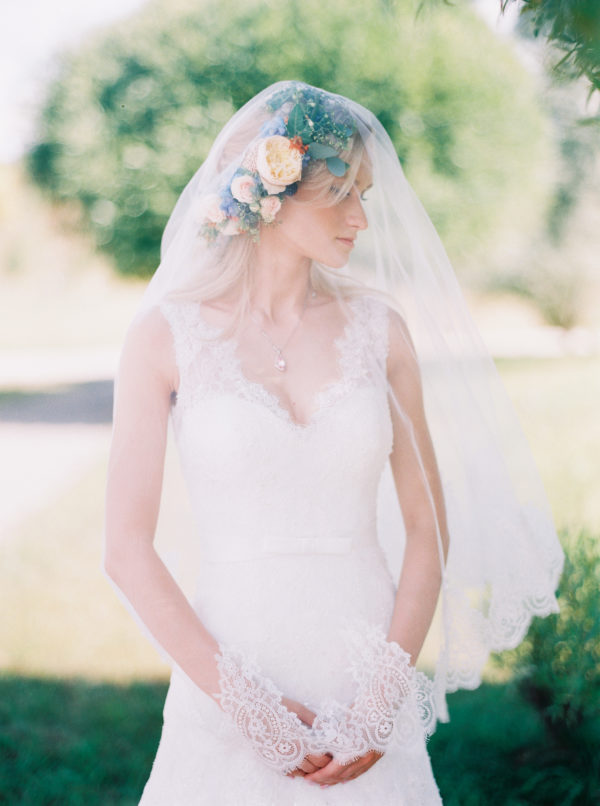
From Lena Kozhina … When we met with the couple for the first time, we immediately paid attention to Dima’s behavior towards Julia. There was a feeling of tenderness and awe, and we immediately wanted to recreate this atmosphere of love, care and warmth on their Big Day.
Later, when we had chosen a green meadow and an uncovered pavilion overlooking a lake as the project site, it only highlighted a light summer mood with colorful florals and a great number of natural woods. The name of the site is Fox Lodge and peach-orange color, as one of the Bride’s favorites, set the tone for the whole design – from the invitations, in which we used images of fox cubs to elements of serving guest tables and other decorative elements with the corresponding bright accents.
Photography: Lena Kozhina | Event Planning: Ajur Wedding | Wedding Dress: Rosa Clara | Shoes: Marc Jacobs | Catering: Fox Lodge | Makeup Artist: Elena Otrembskaya | Wedding Venue: Fox Lodge | Cake and Desserts: Yumbaker | Decor: Latte Decor
From Our Partners

Academia.edu no longer supports Internet Explorer.
To browse Academia.edu and the wider internet faster and more securely, please take a few seconds to upgrade your browser .
Enter the email address you signed up with and we'll email you a reset link.
- We're Hiring!
- Help Center

Land use changes in the environs of Moscow

Related Papers
Eurasian Geography and Economics
Grigory Ioffe
komal choudhary
This study illustrates the spatio-temporal dynamics of urban growth and land use changes in Samara city, Russia from 1975 to 2015. Landsat satellite imageries of five different time periods from 1975 to 2015 were acquired and quantify the changes with the help of ArcGIS 10.1 Software. By applying classification methods to the satellite images four main types of land use were extracted: water, built-up, forest and grassland. Then, the area coverage for all the land use types at different points in time were measured and coupled with population data. The results demonstrate that, over the entire study period, population was increased from 1146 thousand people to 1244 thousand from 1975 to 1990 but later on first reduce and then increase again, now 1173 thousand population. Builtup area is also change according to population. The present study revealed an increase in built-up by 37.01% from 1975 to 1995, than reduce -88.83% till 2005 and an increase by 39.16% from 2005 to 2015, along w...
Elena Milanova
Land use/Cover Change in Russia within the context of global challenges. The paper presents the results of a research project on Land Use/Cover Change (LUCC) in Russia in relations with global problems (climate change, environment and biodiversity degradation). The research was carried out at the Faculty of Geography, Moscow State University on the basis of the combination of remote sensing and in-field data of different spatial and temporal resolution. The original methodology of present-day landscape interpretation for land cover change study has been used. In Russia the major driver of land use/land cover change is agriculture. About twenty years ago the reforms of Russian agriculture were started. Agricultural lands in many regions were dramatically impacted by changed management practices, resulted in accelerated erosion and reduced biodiversity. Between the natural factors that shape agriculture in Russia, climate is the most important one. The study of long-term and short-ter...
Annals of The Association of American Geographers
Land use and land cover change is a complex process, driven by both natural and anthropogenic transformations (Fig. 1). In Russia, the major driver of land use / land cover change is agriculture. It has taken centuries of farming to create the existing spatial distribution of agricultural lands. Modernization of Russian agriculture started fifteen years ago. It has brought little change in land cover, except in the regions with marginal agriculture, where many fields were abandoned. However, in some regions, agricultural lands were dramatically impacted by changed management practices, resulting in accelerating erosion and reduced biodiversity. In other regions, federal support and private investments in the agricultural sector, especially those made by major oil and financial companies, has resulted in a certain land recovery. Between the natural factors that shape the agriculture in Russia, climate is the most important one. In the North European and most of the Asian part of the ...
Ekonomika poljoprivrede
Vasilii Erokhin
Journal of Rural Studies
judith pallot
In recent decades, Russia has experienced substantial transformations in agricultural land tenure. Post-Soviet reforms have shaped land distribution patterns but the impacts of these on agricultural use of land remain under-investigated. On a regional scale, there is still a knowledge gap in terms of knowing to what extent the variations in the compositions of agricultural land funds may be explained by changes in the acreage of other land categories. Using a case analysis of 82 of Russia’s territories from 2010 to 2018, the authors attempted to study the structural variations by picturing the compositions of regional land funds and mapping agricultural land distributions based on ranking “land activity”. Correlation analysis of centered log-ratio transformed compositional data revealed that in agriculture-oriented regions, the proportion of cropland was depressed by agriculture-to-urban and agriculture-to-industry land loss. In urbanized territories, the compositions of agricultura...
Open Geosciences
Alexey Naumov
Despite harsh climate, agriculture on the northern margins of Russia still remains the backbone of food security. Historically, in both regions studied in this article – the Republic of Karelia and the Republic of Sakha (Yakutia) – agricultural activities as dairy farming and even cropping were well adapted to local conditions including traditional activities such as horse breeding typical for Yakutia. Using three different sources of information – official statistics, expert interviews, and field observations – allowed us to draw a conclusion that there are both similarities and differences in agricultural development and land use of these two studied regions. The differences arise from agro-climate conditions, settlement history, specialization, and spatial pattern of economy. In both regions, farming is concentrated within the areas with most suitable natural conditions. Yet, even there, agricultural land use is shrinking, especially in Karelia. Both regions are prone to being af...
Loading Preview
Sorry, preview is currently unavailable. You can download the paper by clicking the button above.
RELATED TOPICS
- We're Hiring!
- Help Center
- Find new research papers in:
- Health Sciences
- Earth Sciences
- Cognitive Science
- Mathematics
- Computer Science
- Academia ©2024

IMAGES
VIDEO
COMMENTS
"Mini" lessons or activities can be added on and incorporated into various parts of your curriculum planning. Creative Writing Mini Lessons Anonymous Reading Questions. Goal: Encourage students to ask questions and/or to give structure to class discussions. Writing Activity: Give each student a sticky note as they enter the room.
1: Who's the Goat: Debating the Greatest of All Time. 2: Mapping the Neighborhood: Creating Maps to Generate Story Ideas. 3: My Obituary: The Story of Your Life. 4: Double, Double, Toil & Trouble: Writing Recipes for Magic Potions. 5: My Principal is an Alien: Writing for the Tabloids.
Writer's workshop is a method of teaching writing developed by Donald Graves and Donald Murray, amongst other teacher-researchers. The writer's workshop provides a student-centered environment where students are given time, choice, and voice in their learning. The teacher nurtures the class by creating and mentoring a community of writers.
Prompts for Exploring Emotions. The Joy of Finding a Lost Toy. Revisit a childhood memory of losing a cherished toy and the overwhelming happiness of eventually finding it. A Moment of Overcoming Fear. Write about when you faced a fear head-on and emerged stronger and braver on the other side. The Bittersweet Farewell.
Writing Workshop Mini Lesson #2: Writer's Workshop Materials. The next important writing workshop mini lesson is teaching about the writer's workshop materials and their appropriate uses. In my class we call these writing tools. This may feel like a silly lesson to teach but it's important to teach expectations for using their supplies.
This no prep - just photocopy and teach, yearlong creative writing bundle will keep your students engaged in their writing. This bundle provides holiday writing prompts (Halloween, Christmas, Valentine's Day, Easter) as well as seasonal writing prompts (Fall, Winter, Spring, Summer, Back to School) to support an inclusive classroom environment.
Another favorite among creative writing ideas is having students write diary entries in the voice of a character from literature. This can be a character from a book you read as a class or from a book they read on their own. Either way, it will showcase their creative writing skills and their knowledge of the character! Learn More: Banana Magic ...
ps of three to four people. Give each student three small pieces of paper: one b. ue, one red and one yellow. Each student should write the name of an interesting place on the blue paper, the name of an interesting person or thing on the red paper and an action o. event on the yellow paper. Have students fold and to.
It will walk you through the writing process in a step-by-step order that scaffolds and builds upon each other. These ideas are ideal for any writing curriculum and writer's workshop. 1. Writing Mini Lesson 1- Brainstorming for Interactive Notebooks. 2. Writing Mini Lesson 2- Complete Sentences. 3. Writing Mini Lesson 3- Fragments.
Middle school writer's workshop works for three reasons. 1. Students learn to write best through practicing writing. 2. Students will write more and be more invested in the topic of their choosing. 3. Workshop models enable students to begin taking control of their own learning and think of themselves as writers.
For this creative narrative mini-lesson, give students the rules to writing different types of dialogue. They'll need to know how to: Make a new line of dialogue every time a new speaker talks. Use quotation marks around the words being spoken. Choose a fitting dialogue tag or attribution. Use the appropriate punctuation depending on whether ...
Writing Mini-lessons, Creative Writing, FREEBIES, Holiday Amanda Cardenas October 24, 2022 High School ELA, alternate assessment, ... Engage middle and high school students in meaningful virtual writing assignments! These digital activities pack powerful learning benefits. Plus, they build confidence in reluctant writers.
Zoom in to see the Writer's Workshop project list for 7th graders. Students choose eight projects from the list of twelve. The procedure for each assignment is on the back. This entire procedure is based on one by K-12 teacher Corbett Harrison. Writer's Workshop puts these two things front and center: student choice and the writing process.
Step 1 - The Writing Mini-Lesson. Writing checklists make GREAT anchor charts to support your mini-lessons. You can display the Lucky Little Toolkit writing checklists on your SmartBoard, or print them for use on chart paper. Achieve this anchor chart by simply printing the file as a poster size! In this sample, the "Informative Writing ...
Writing Time. This is going to the longest time period of the class. Which is really the point-students should be writing as much as possible during writing class. It will be around 20 minutes long for the standard 50-minute class. Those in block scheduling will have a bit more liberty in their schedule for this part.
This creative lesson to inspire secondary writers is a newer approach. It's true! Creative writing doesn't have to be intimidating. Engage students with this. is all about the recursive nature of writing. It goes all directions: forward, backward, and sideways. Support secondary writers by teaching them to be reflective throughout the process.
Each 10-15 minute minilesson presents a concept and engages students in an activity. Minilessons are optimized to display on your interactive whiteboard, smart phone, or anything in between. Writing. 21st Century Skills. Social-Emotional Learning.
Both middle and and high school students can benefit from these super fun poetry activities! The middle school poetry unit below helps students develop close reading, critical thinking, and creative writing skills. This unit includes links to over 30 poems (mentor texts) that are relevant to the lives of students and great for introducing ...
You can find even more in our roundups for the 2022-23, 2021-22 and 2020-21 school years, as well as in our collections of 125 picture prompts for creative and narrative writing and 25 spooky ...
Top Elektrostal Art Museums: See reviews and photos of Art Museums in Elektrostal, Russia on Tripadvisor.
The KSSO was designed to fill a niche and coincided with the structural changes occurring in the wider Armed Forces due to the reform and modernization process. It was also tailored to fit changes in Russian thinking concerning the means and methods of modern warfare. The KSSO has been tried and tested in combat, especially in Syria, and is ...
Here are six things you should teach students to do when they are done: 1. Read a mentor text, any text that is within the genre you are writing will do. 2. Read your own writing, in a whisper voice and make changes as you do so. 3. Read a classmate's writing, give them feedback in the form of a note. 6.
This real wedding is pure inspiration. With each stroke of the brush, the details add to the already ideal picture: one of the most picturesque Moscow areas, the warm day in June, the tenderest and the most beautiful bridal portraits, the ceremony in the greenhouse, wallowing in flowers and sun rays….
Enter the email address you signed up with and we'll email you a reset link.